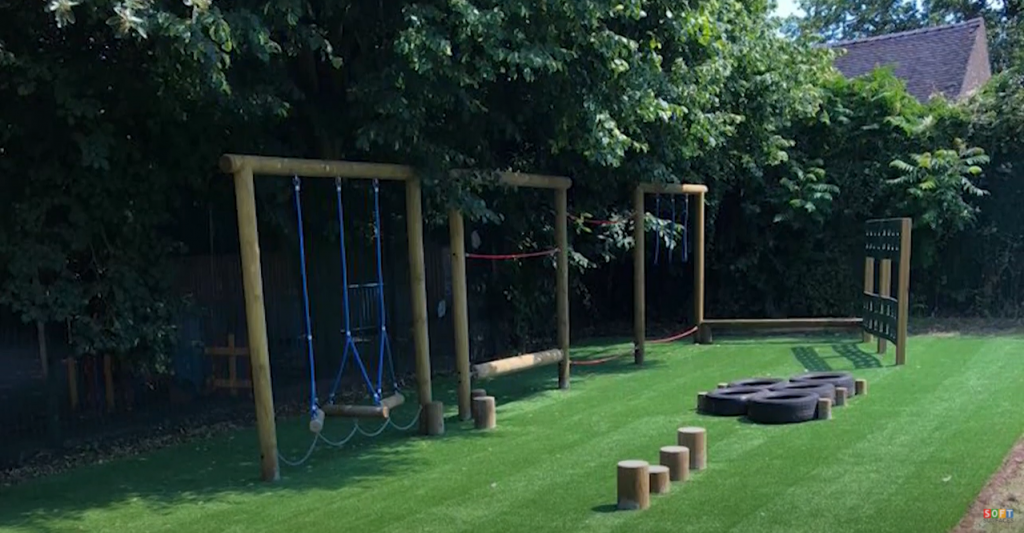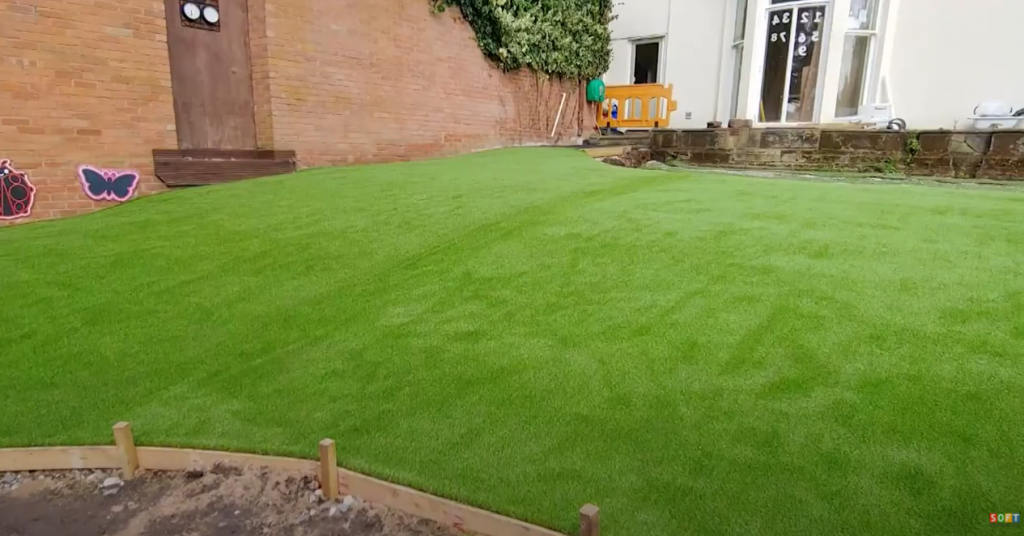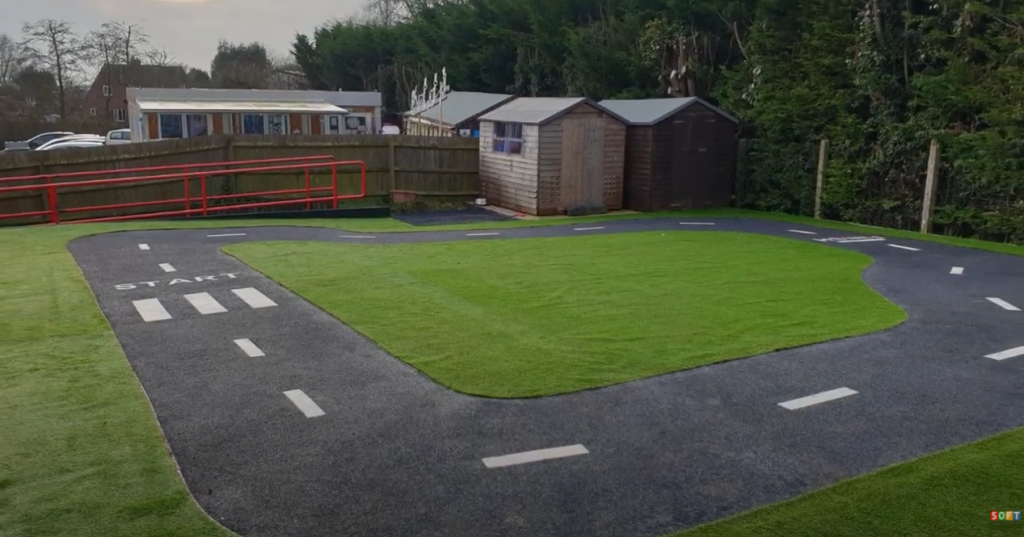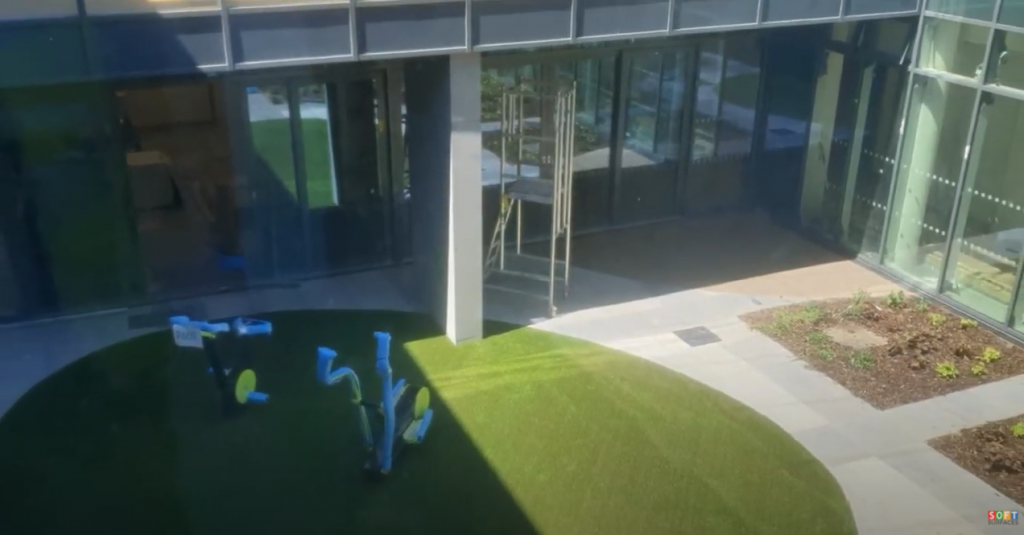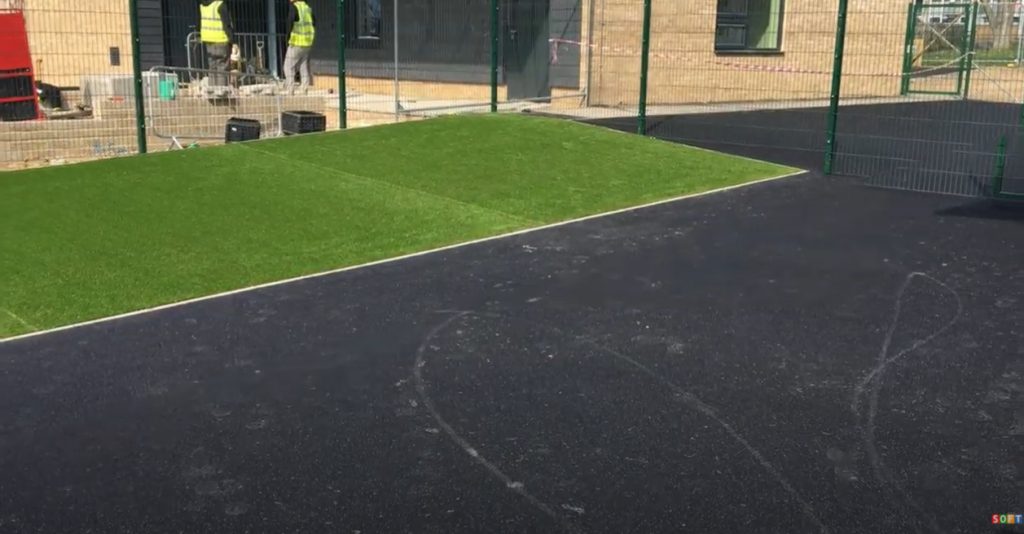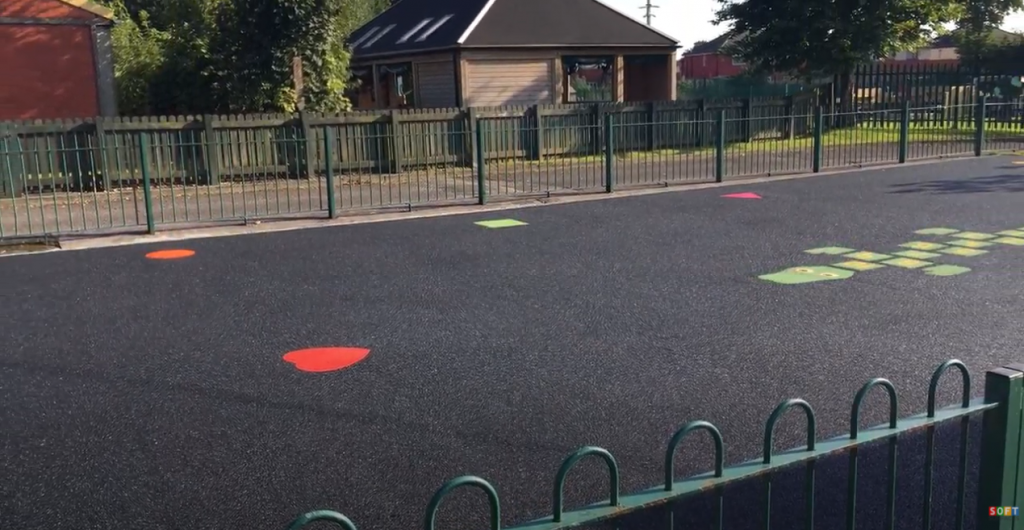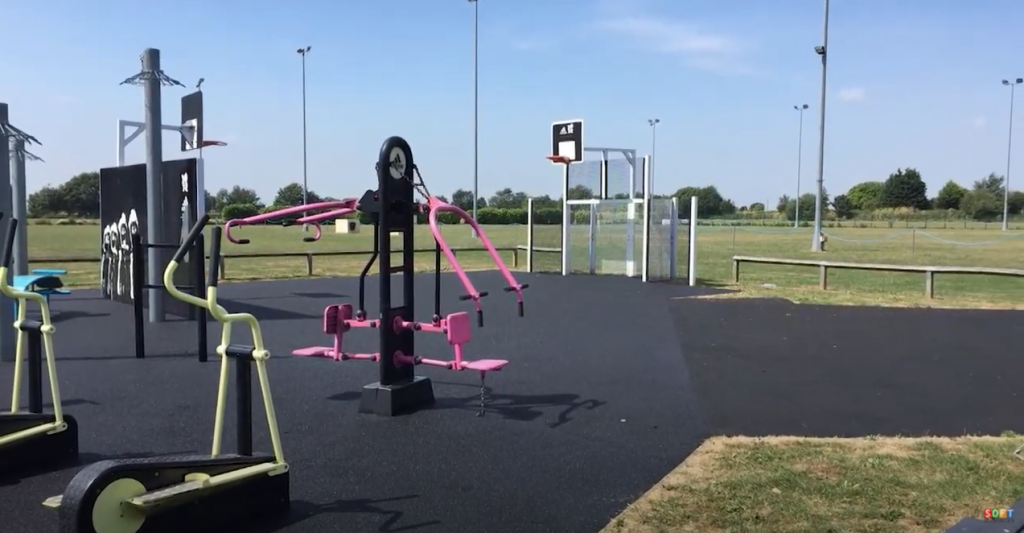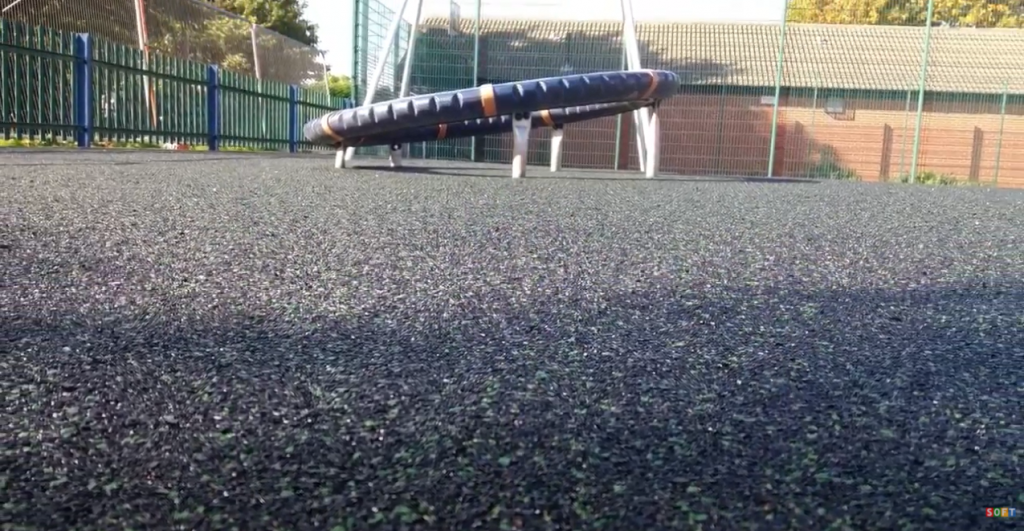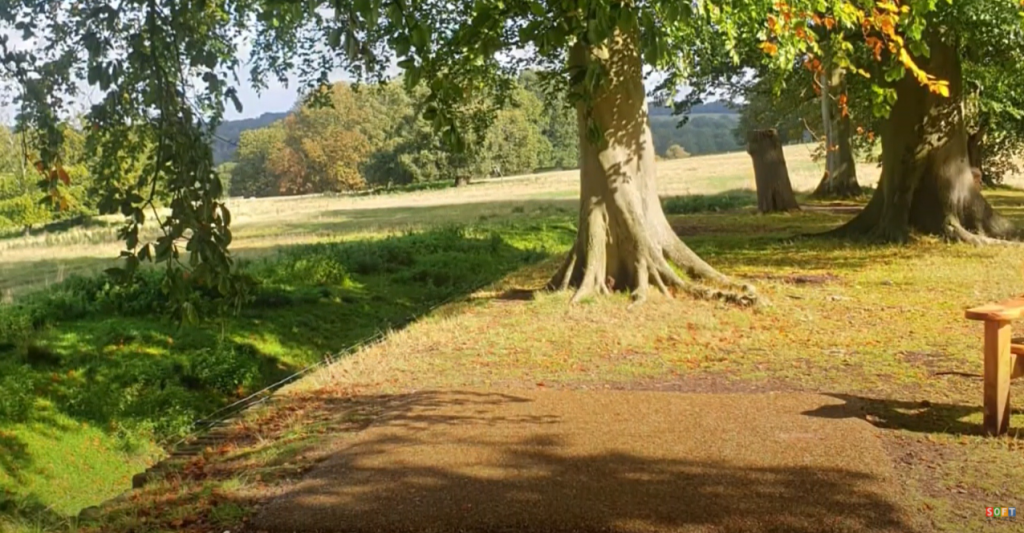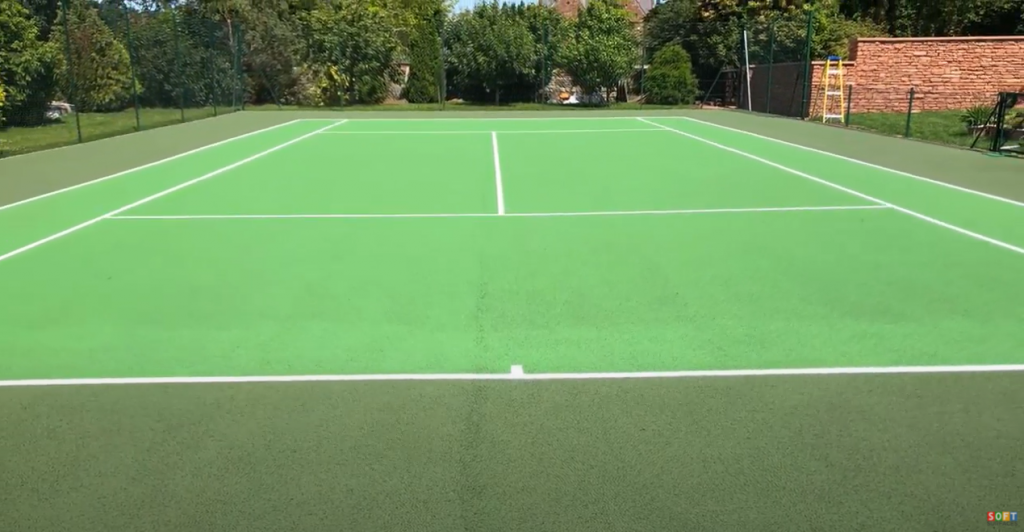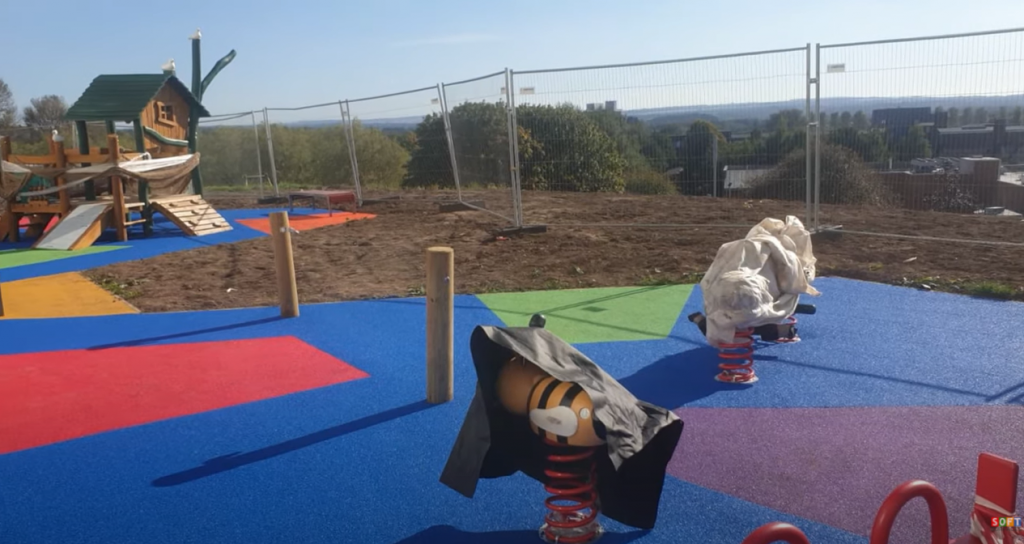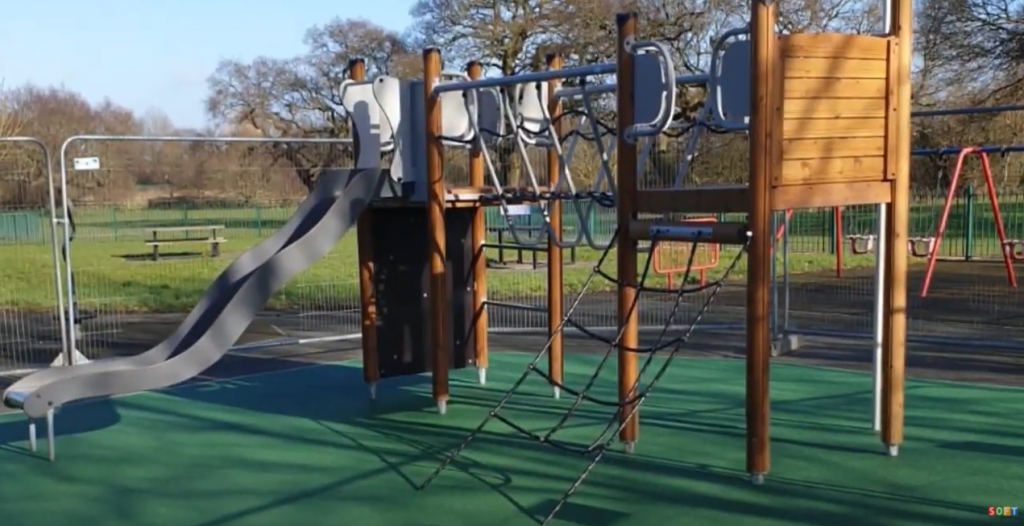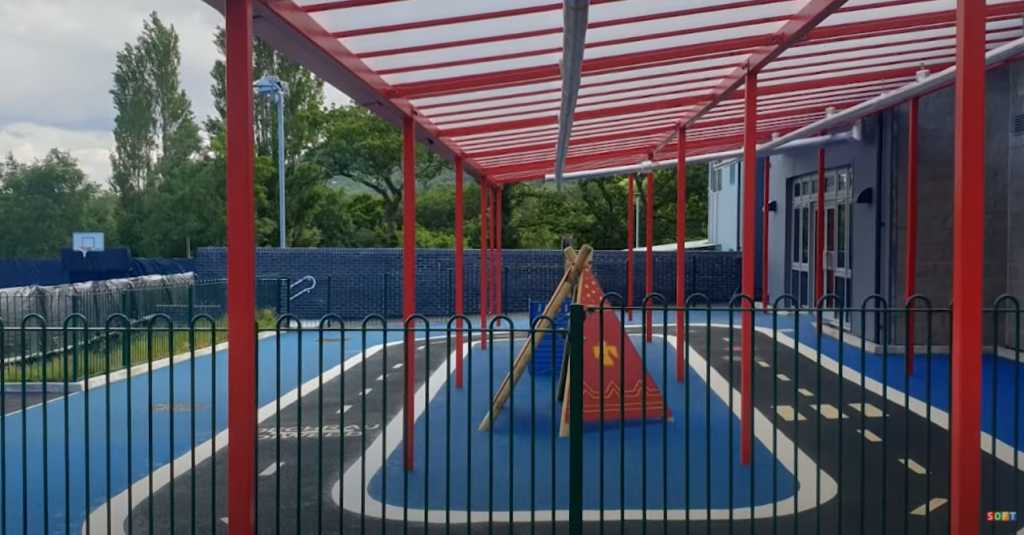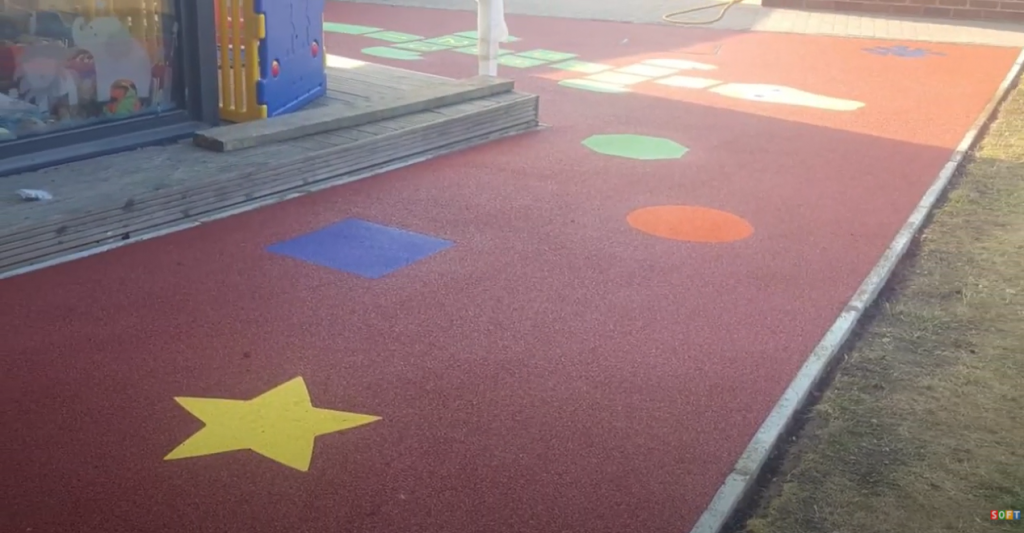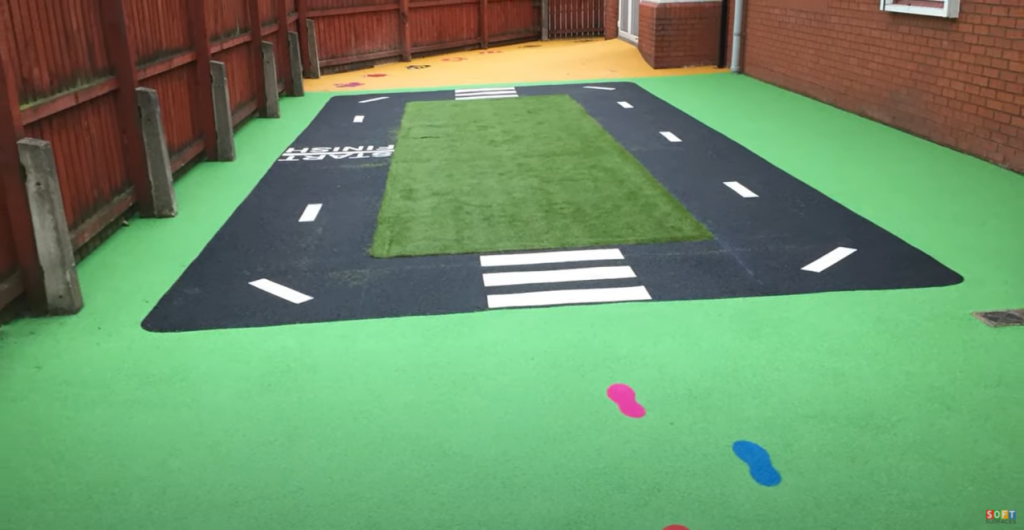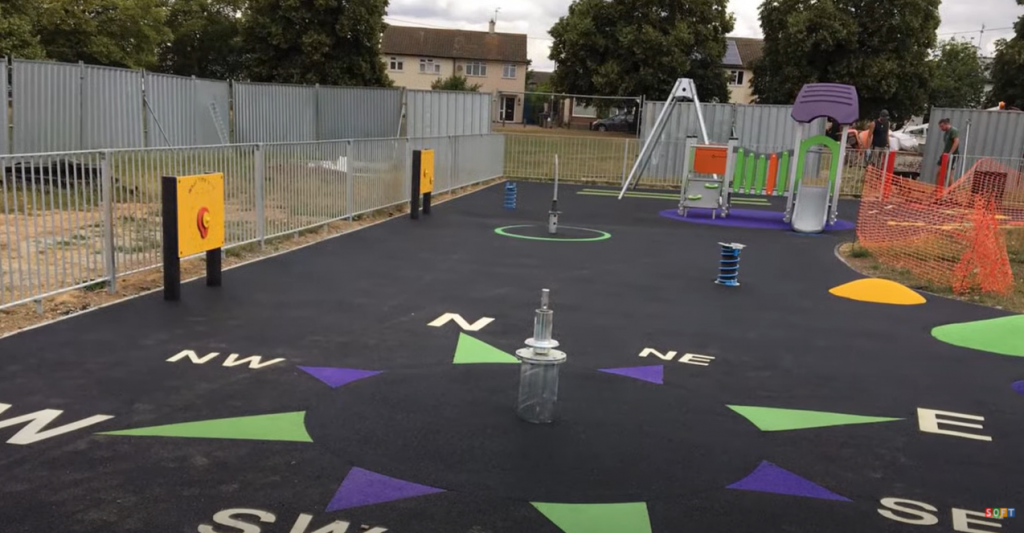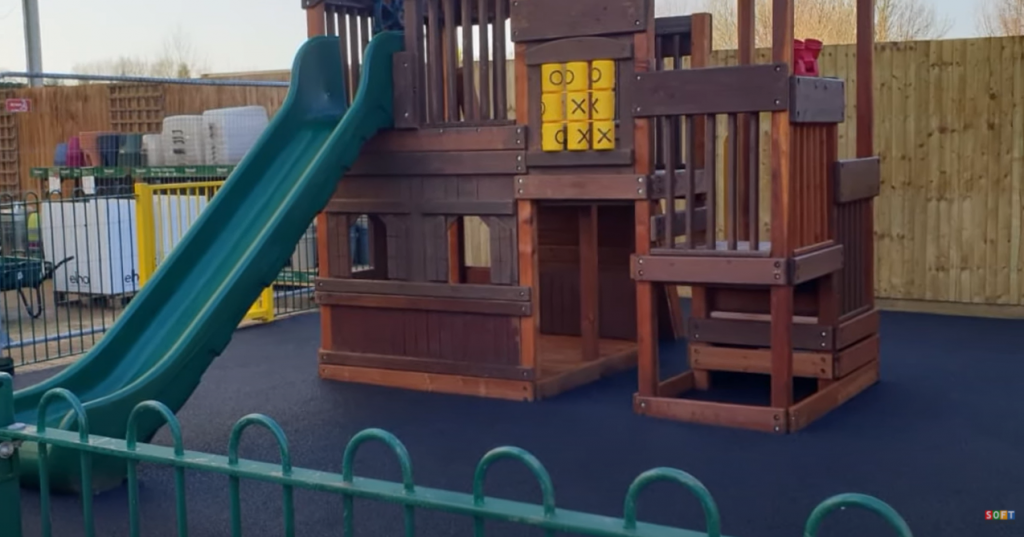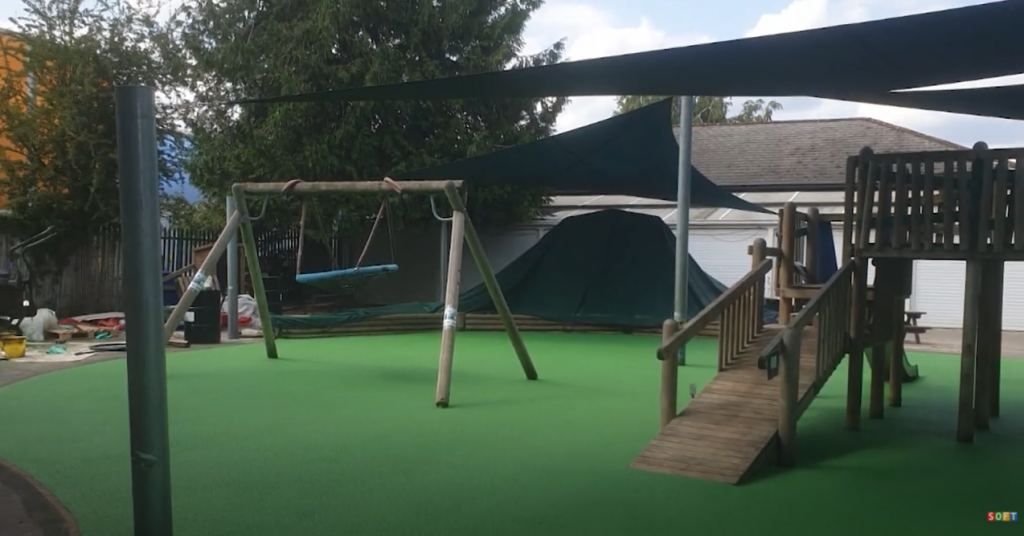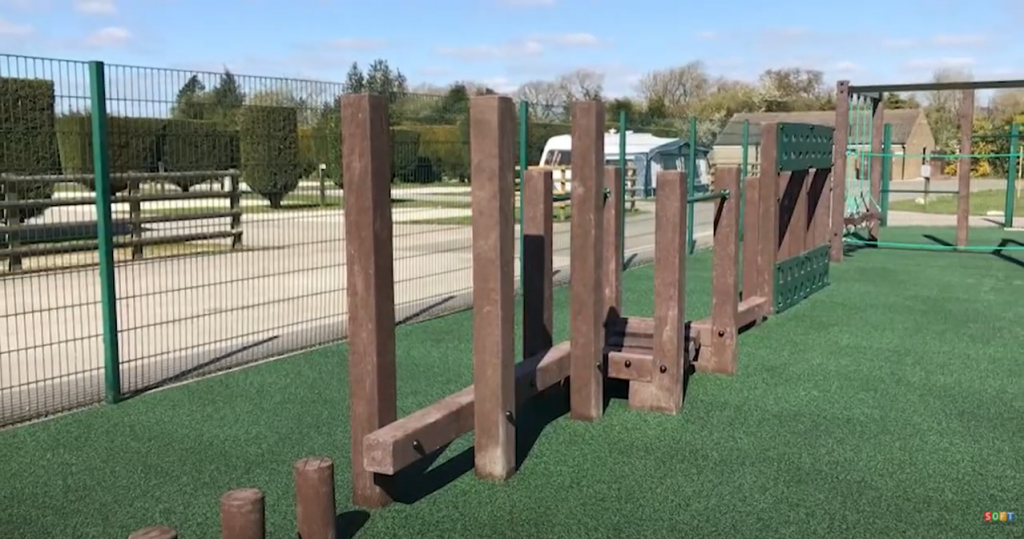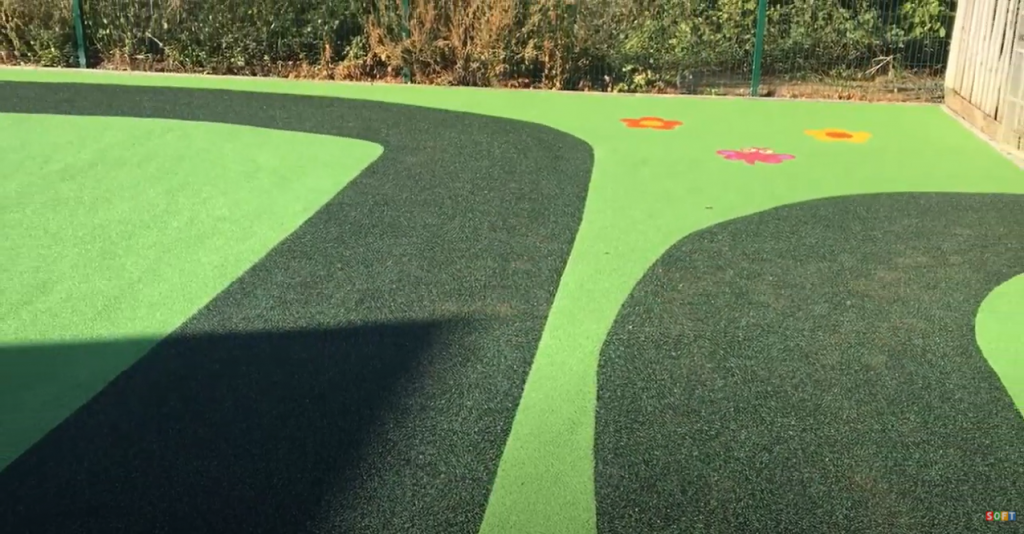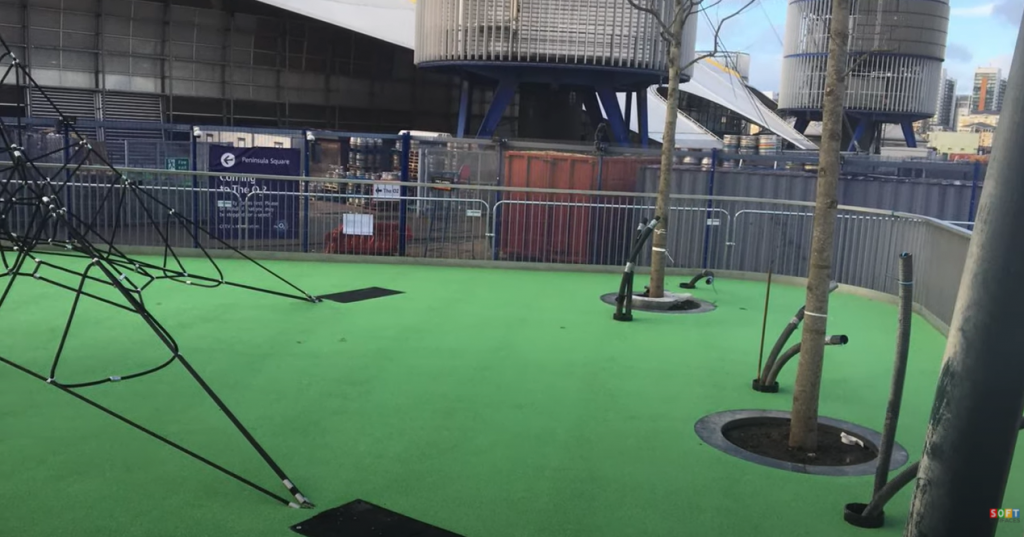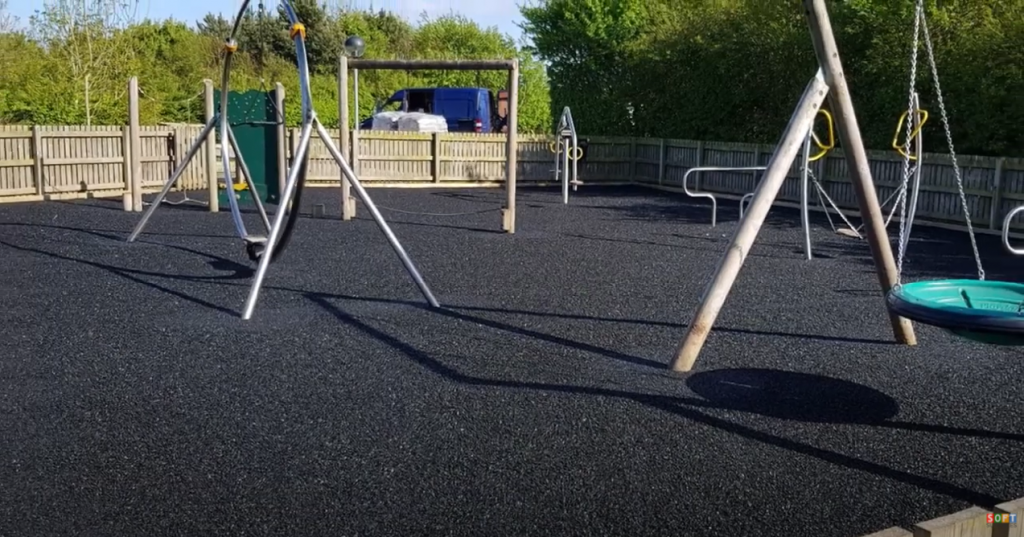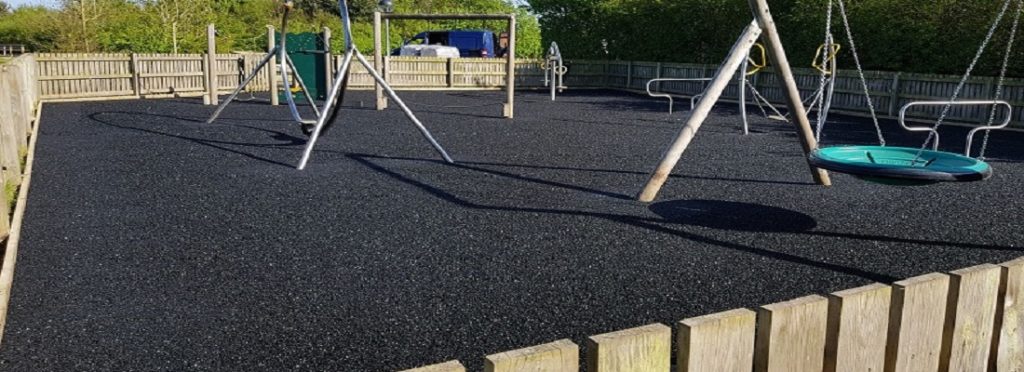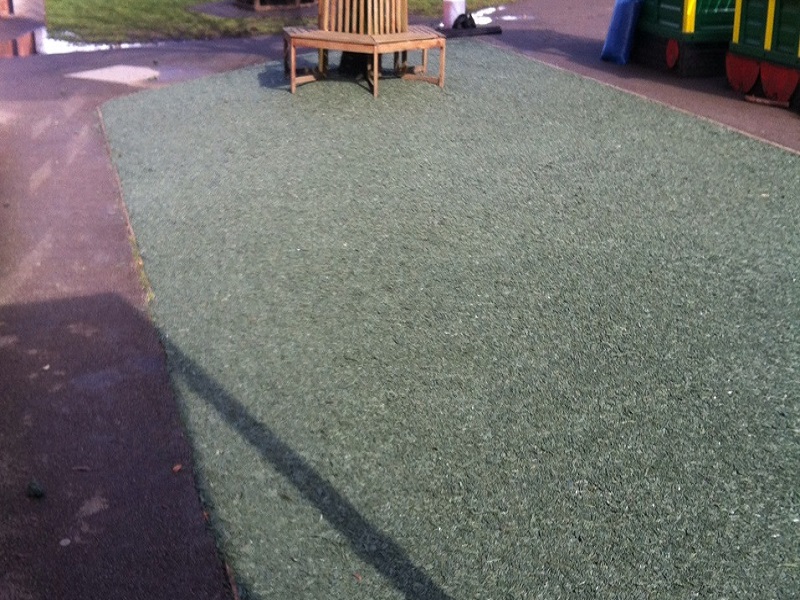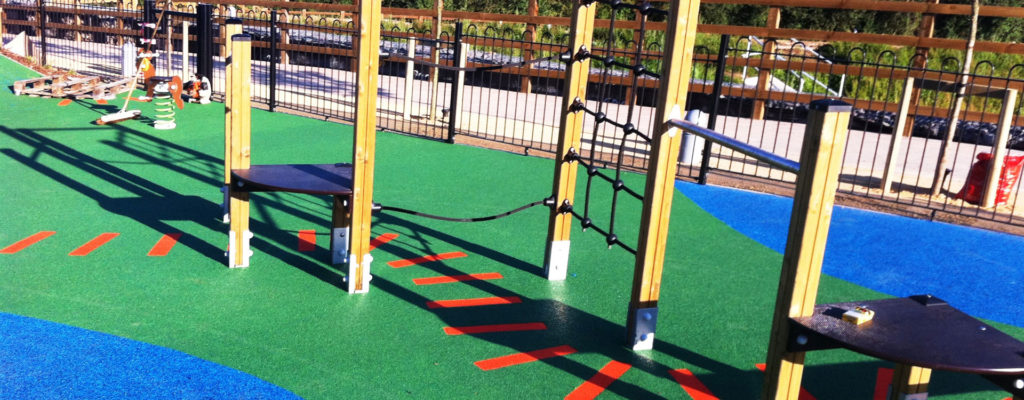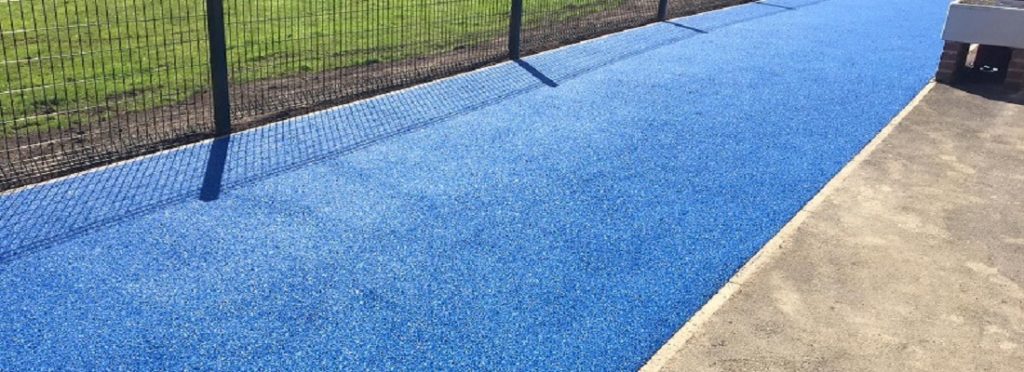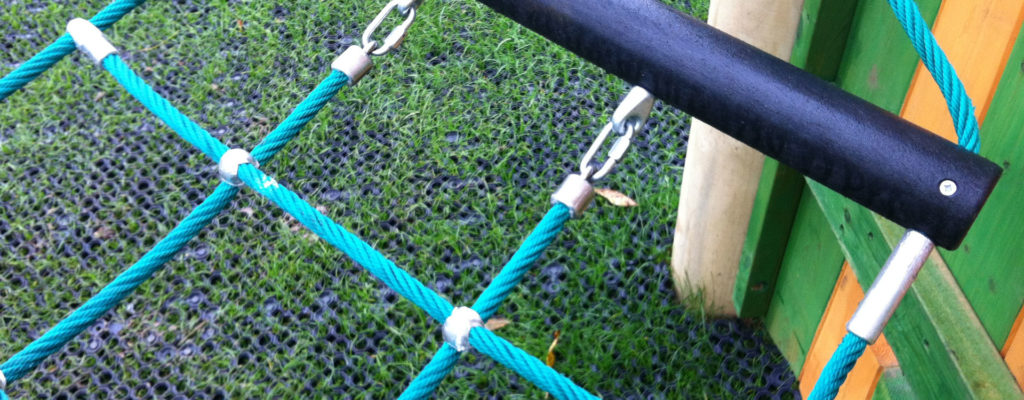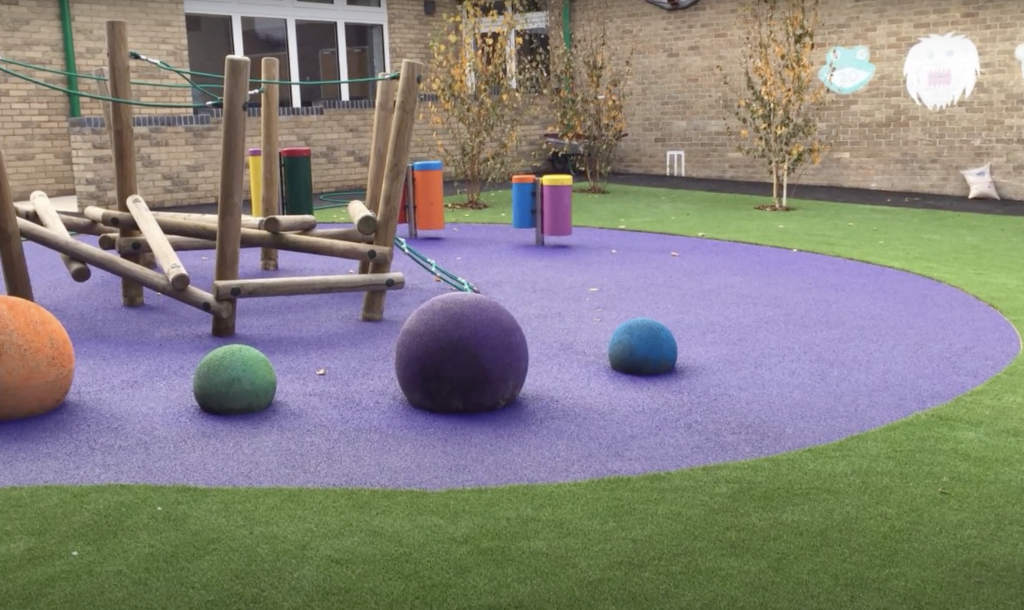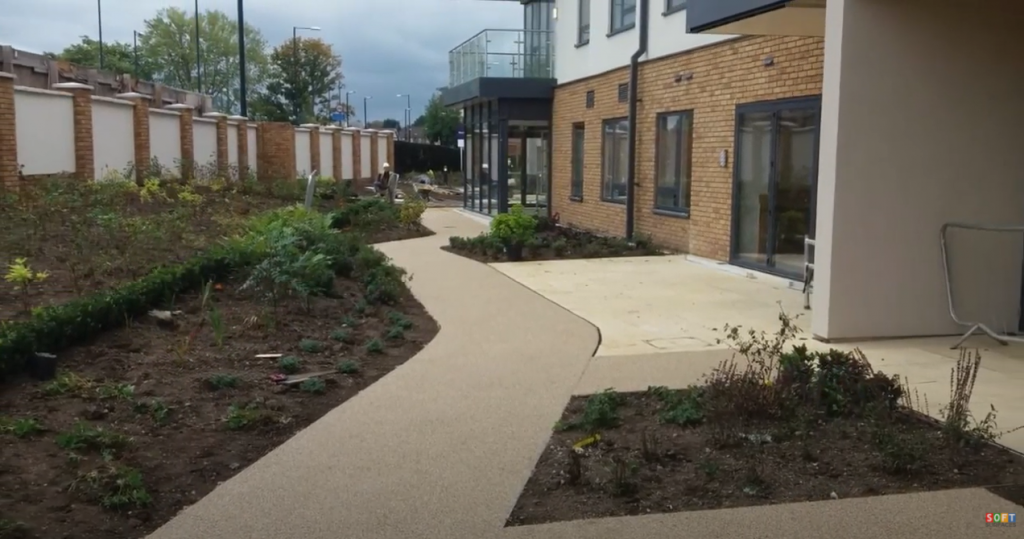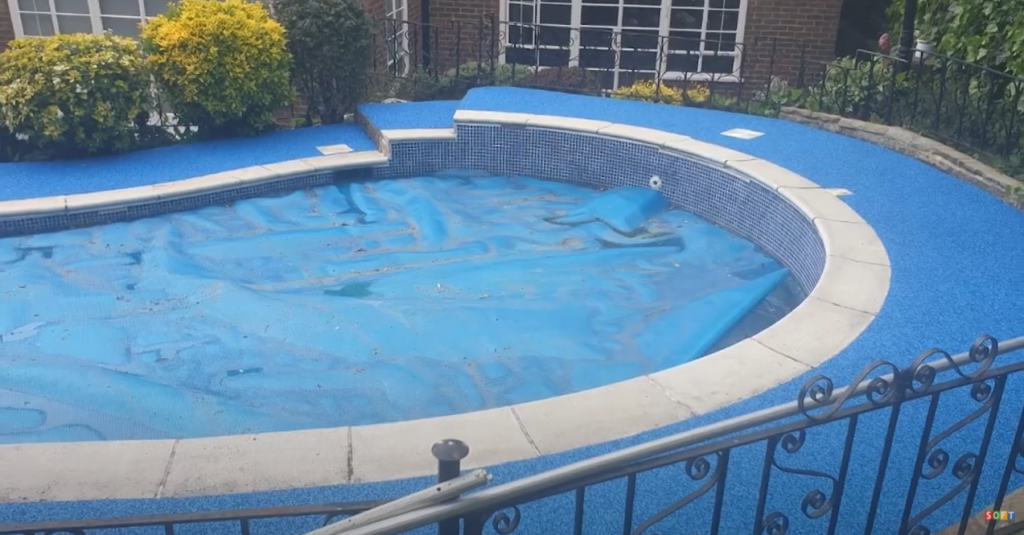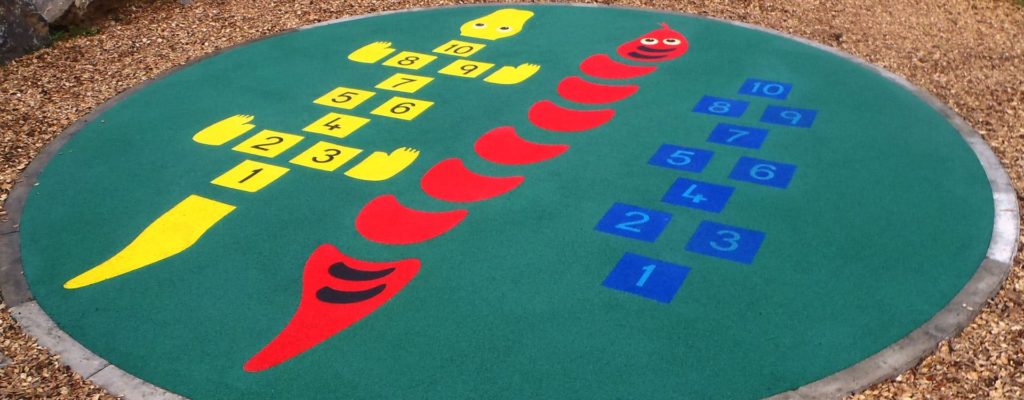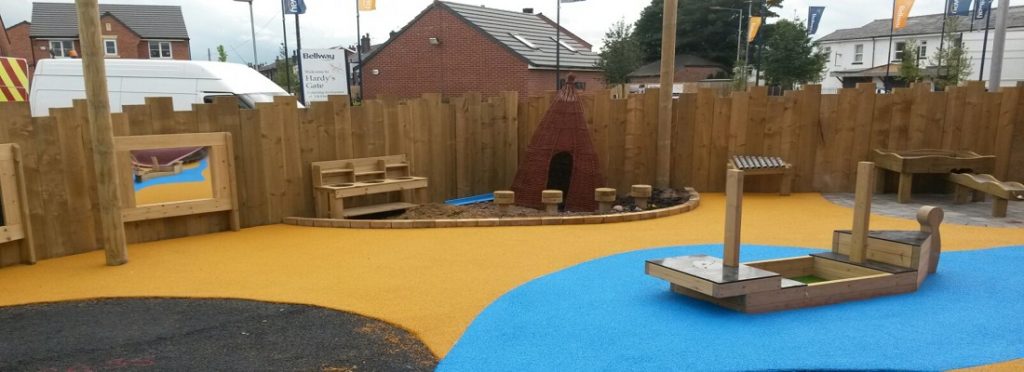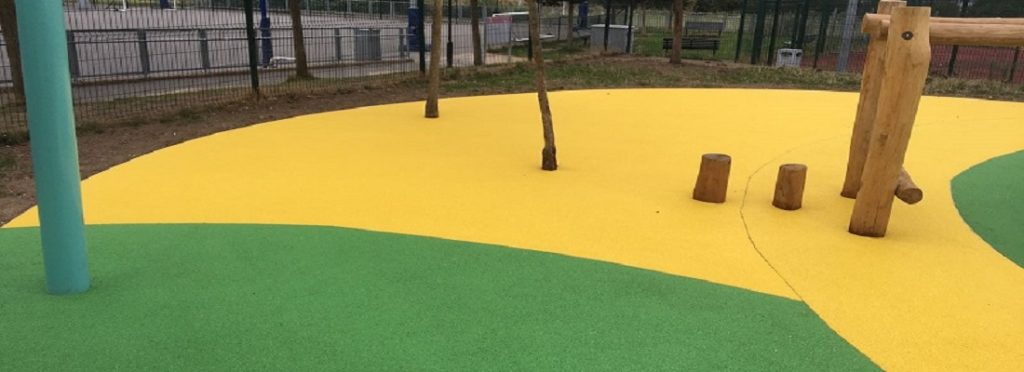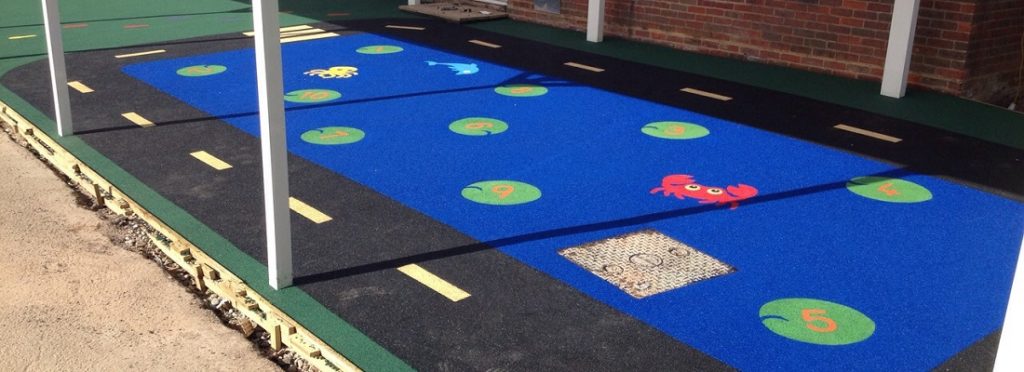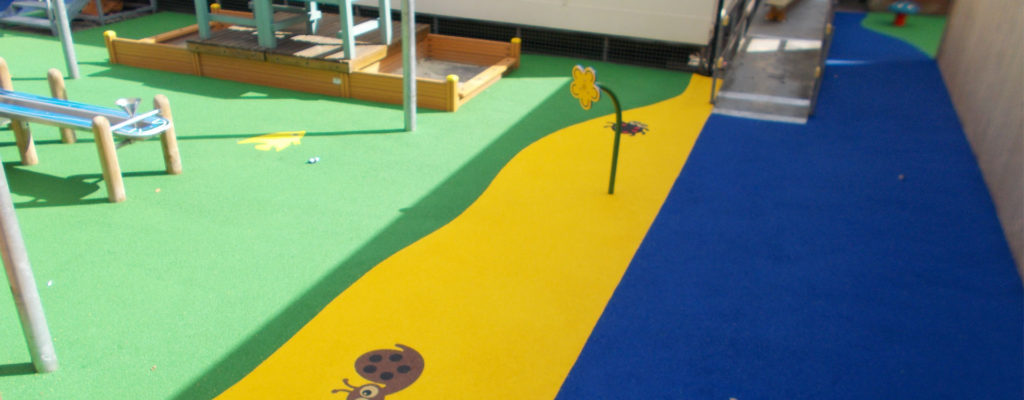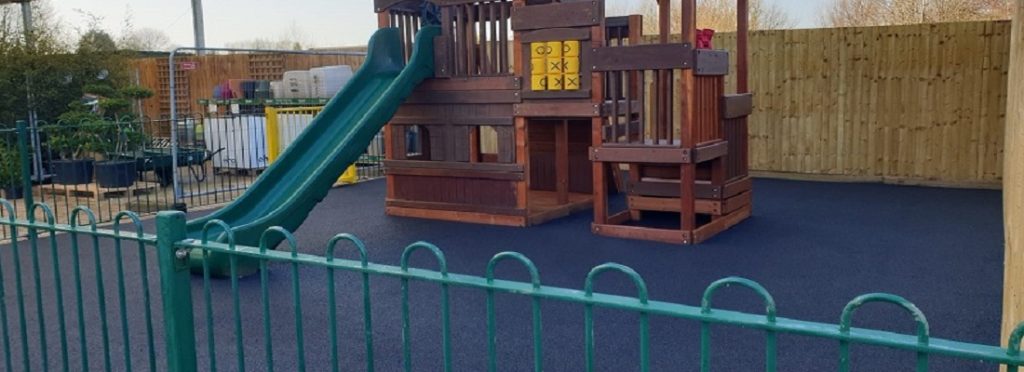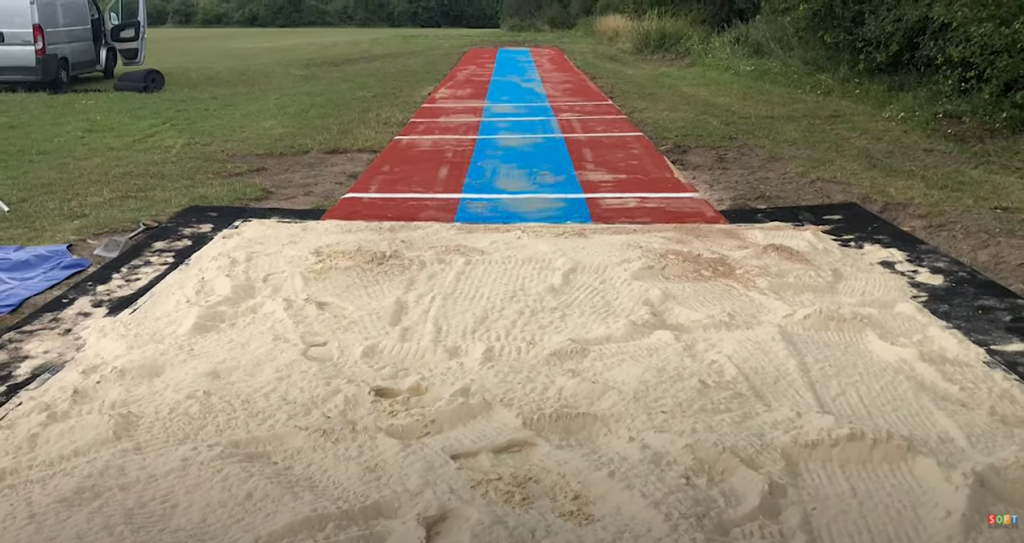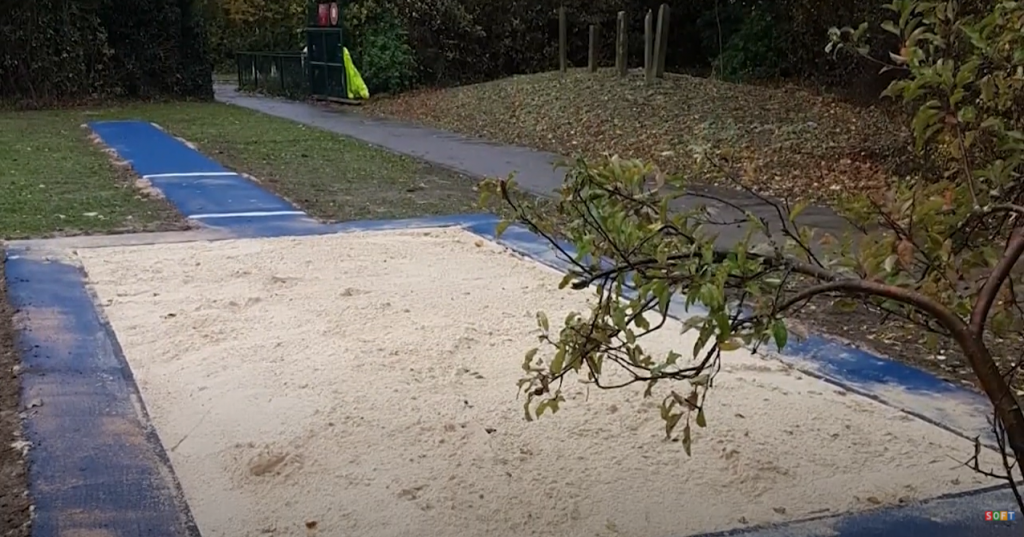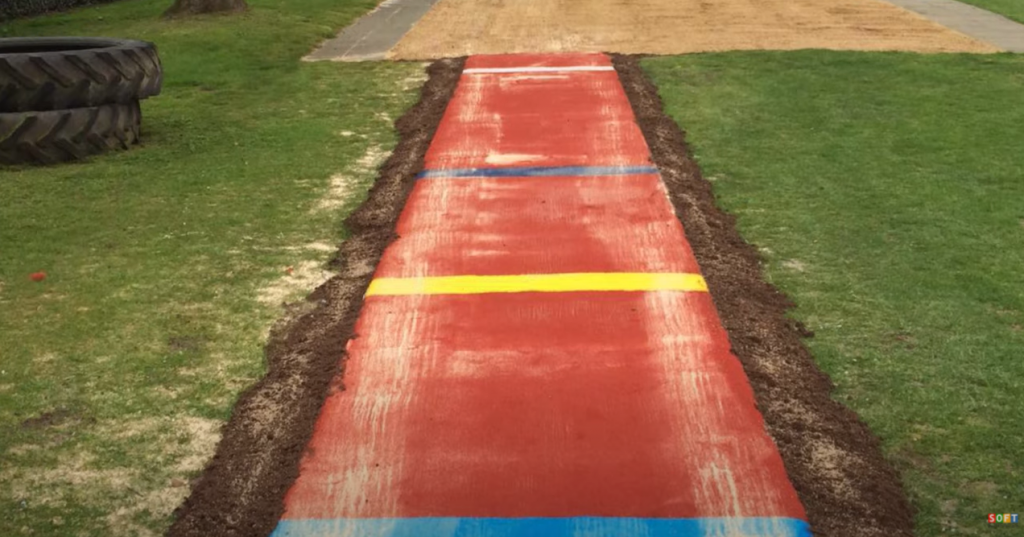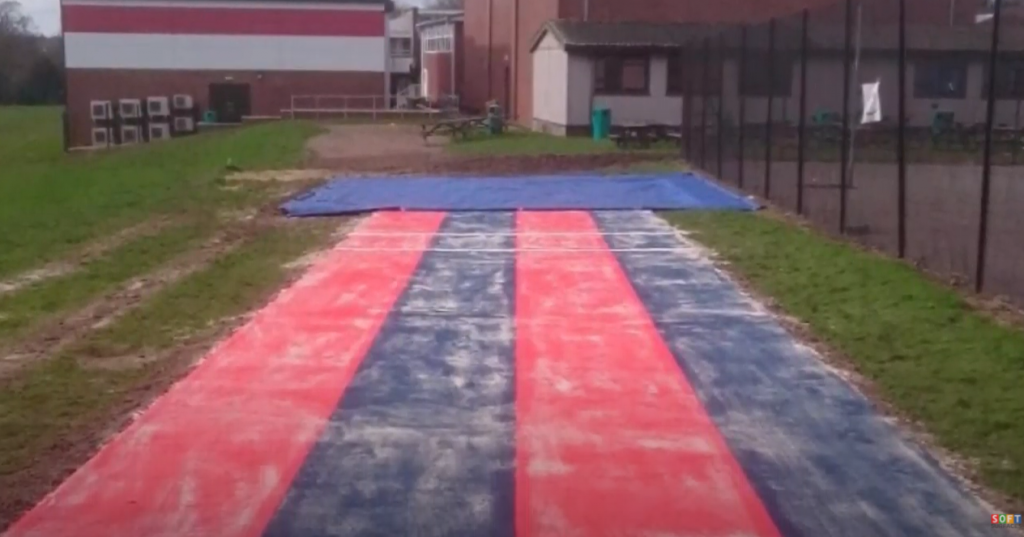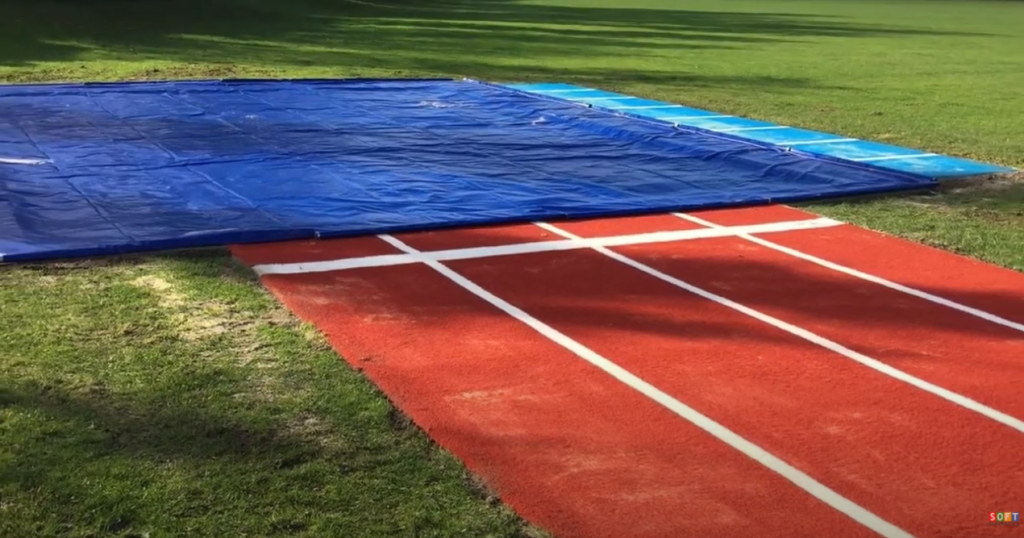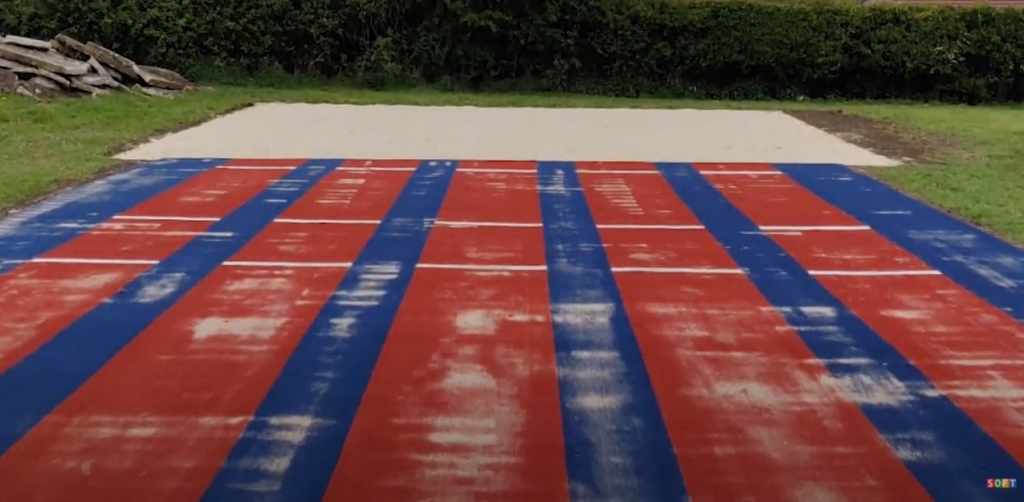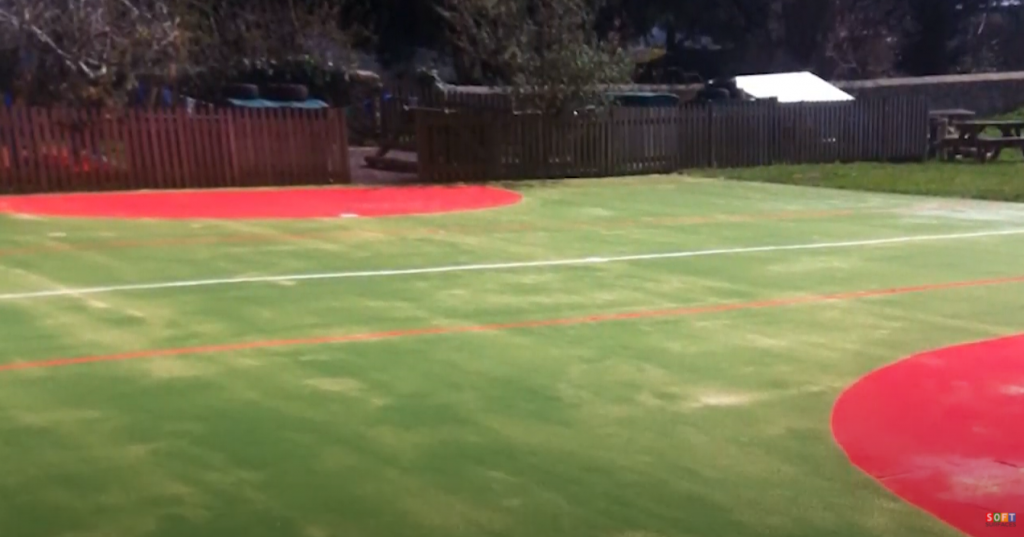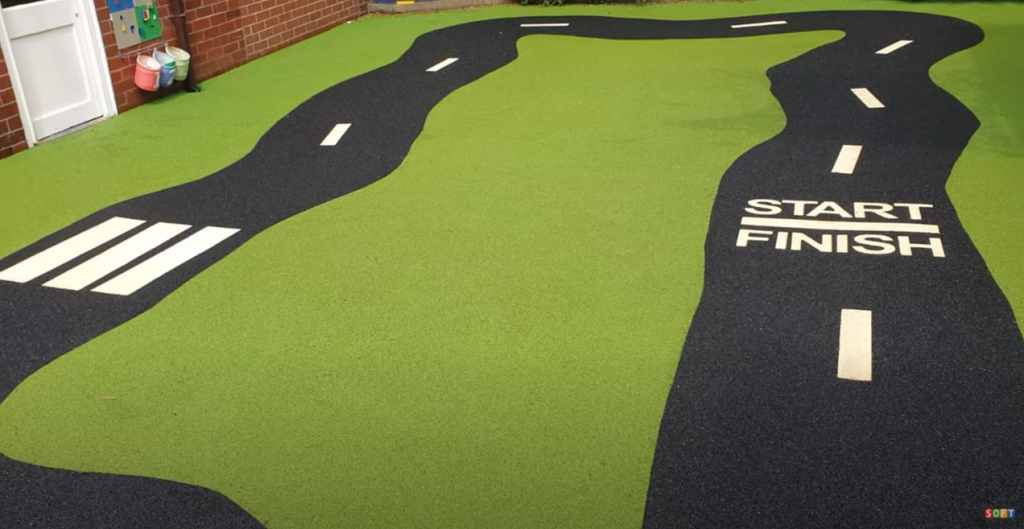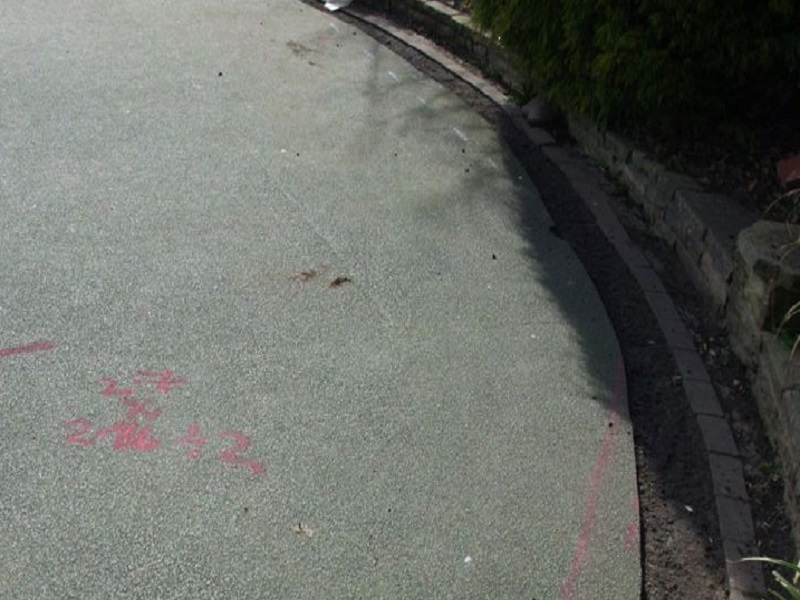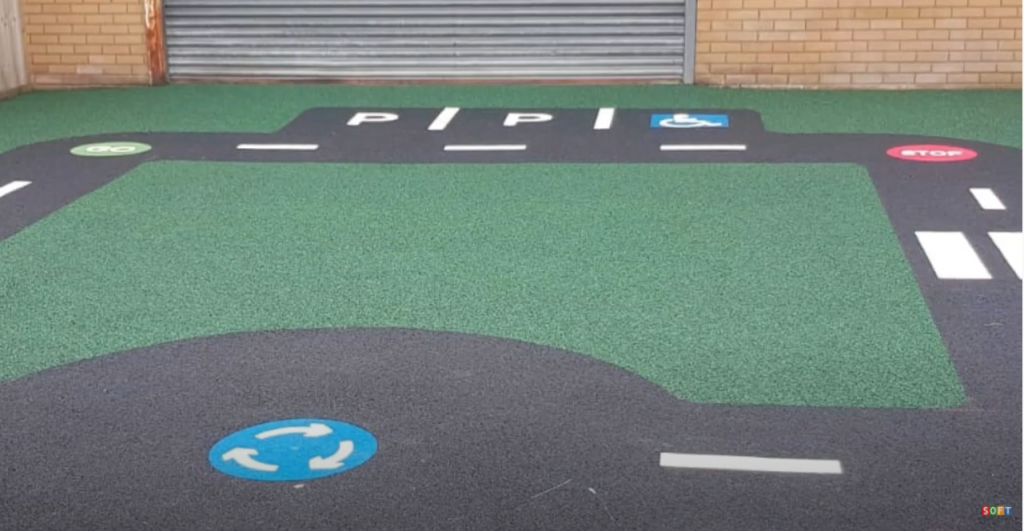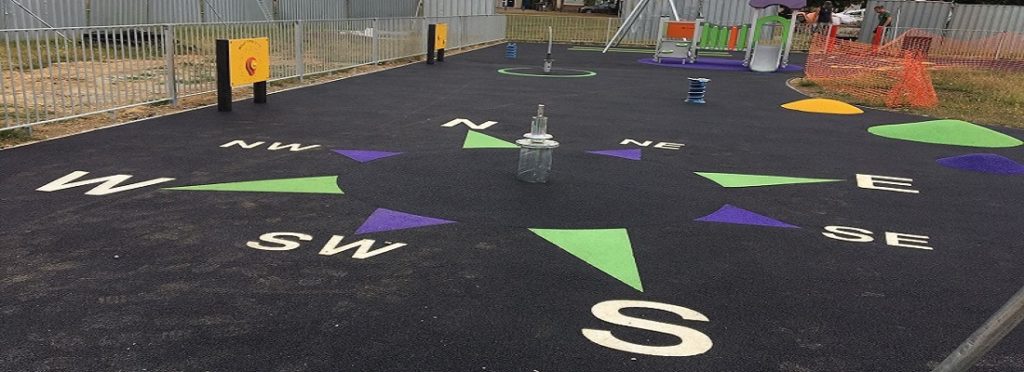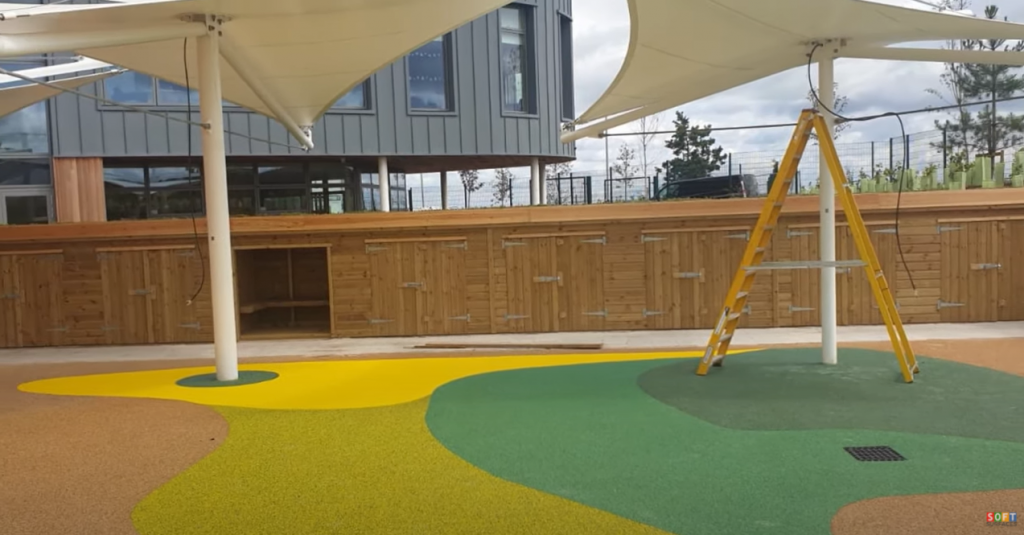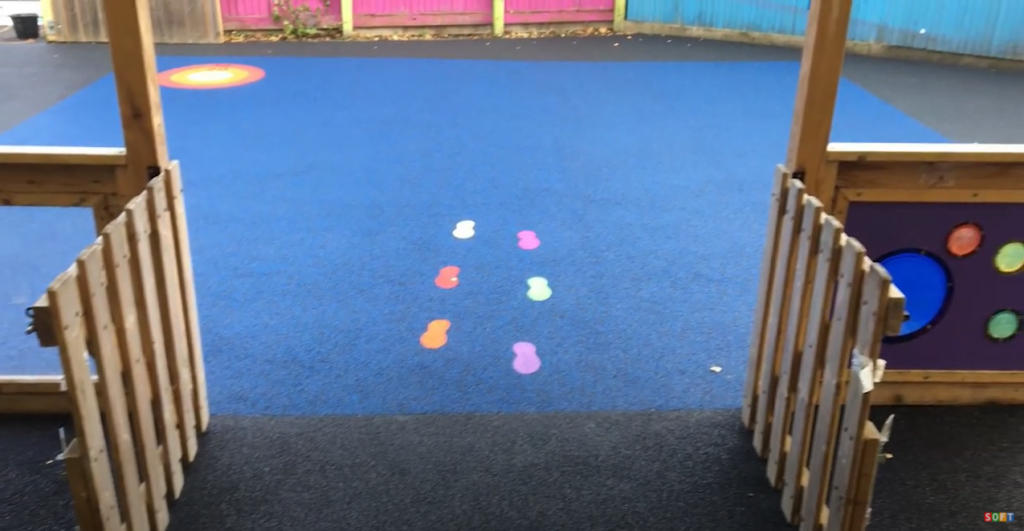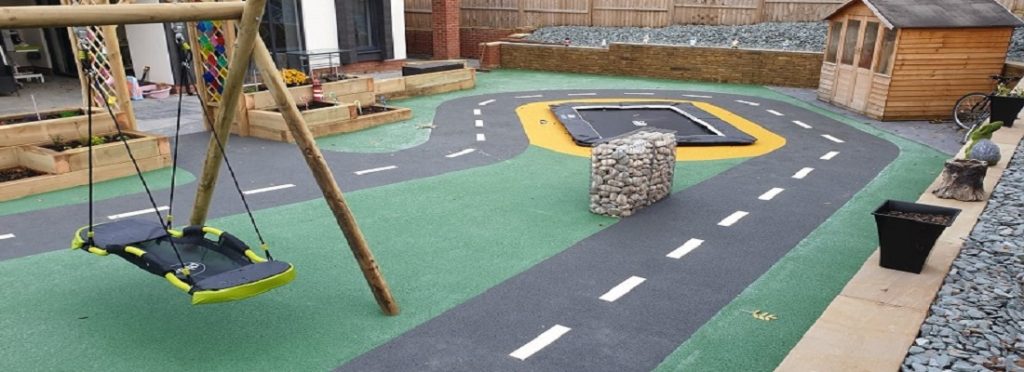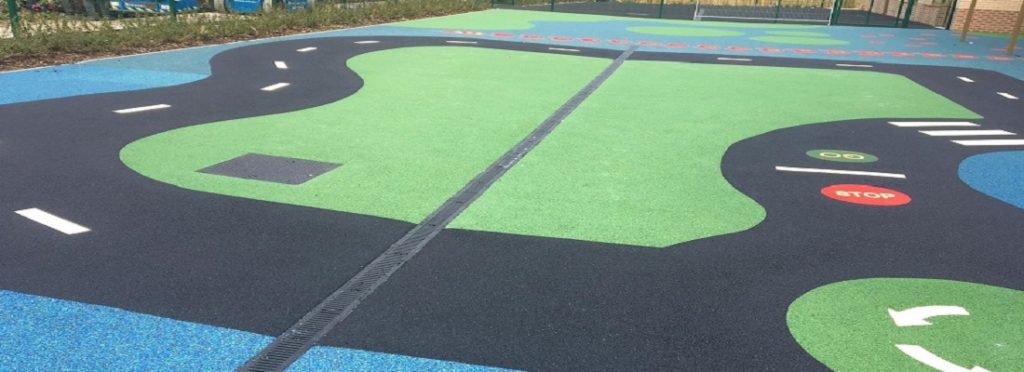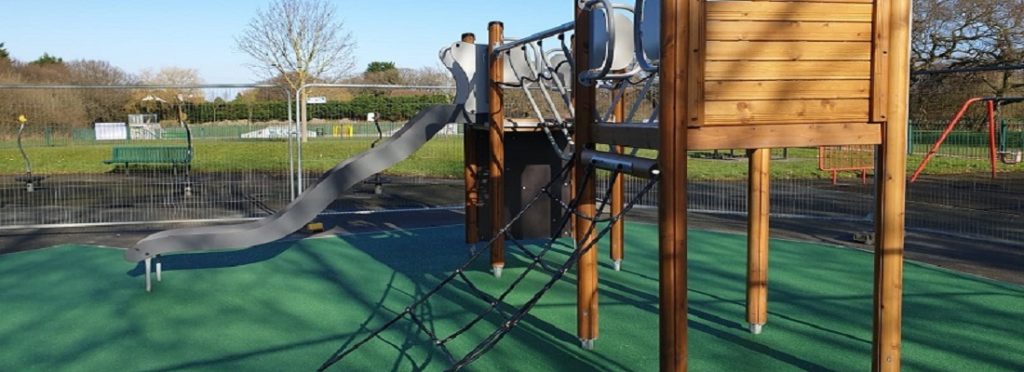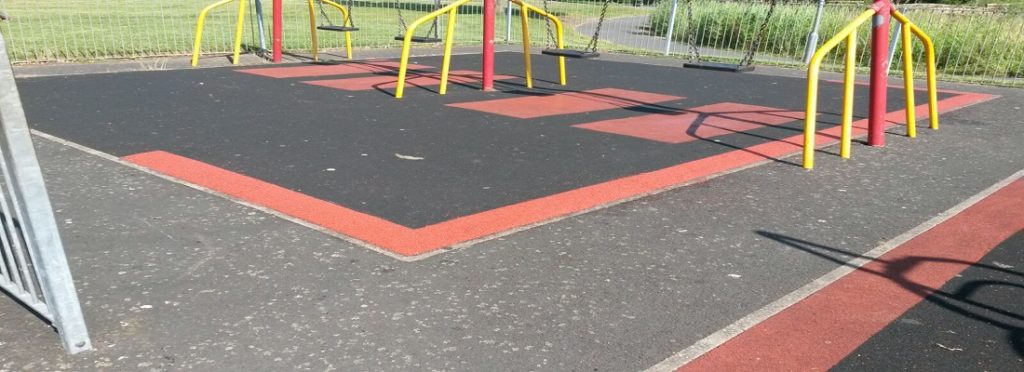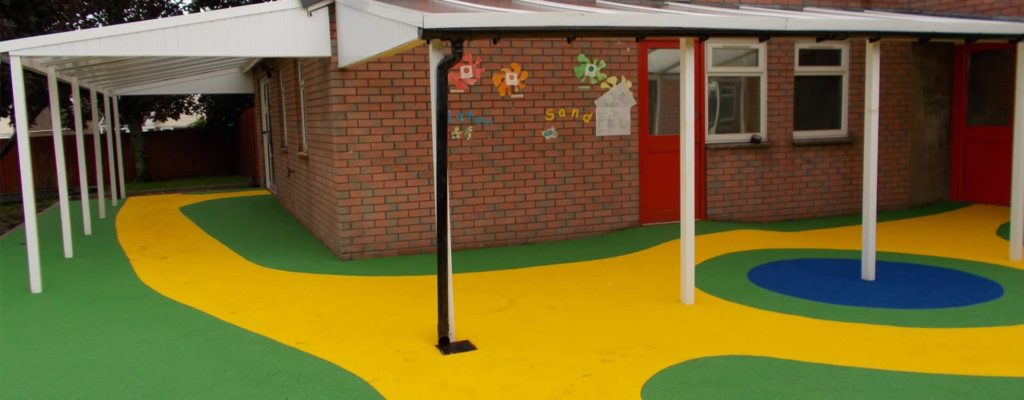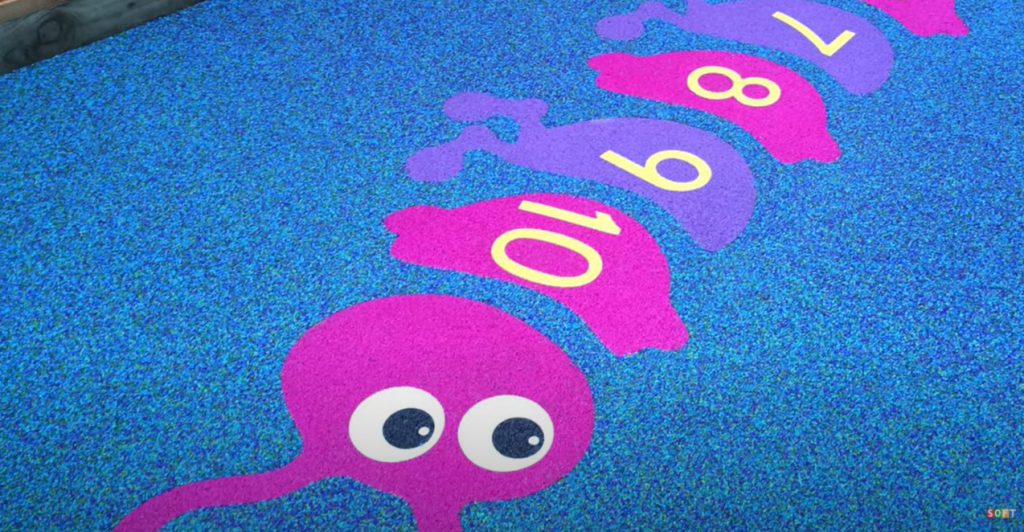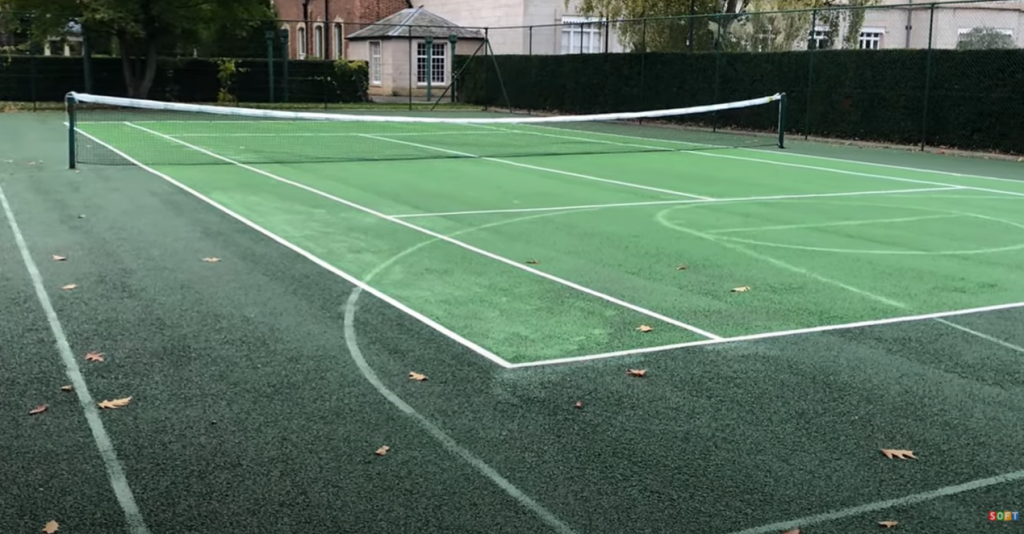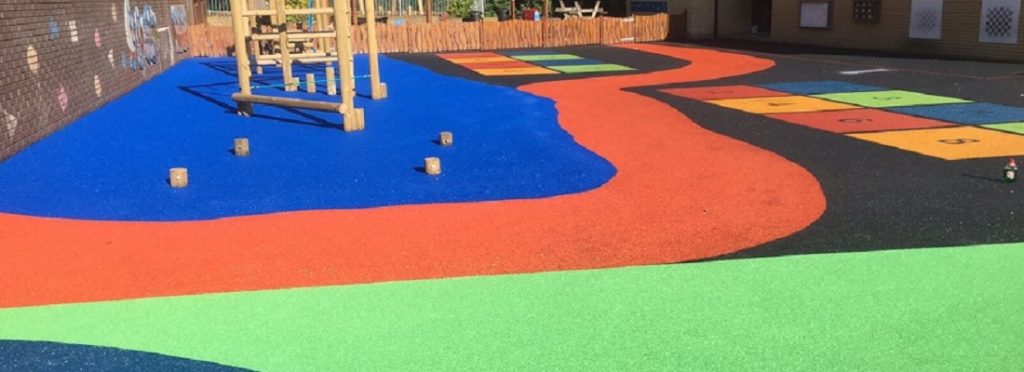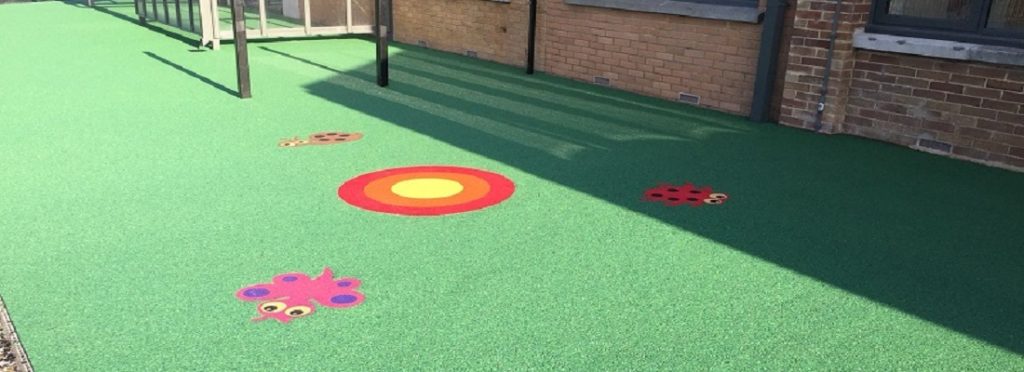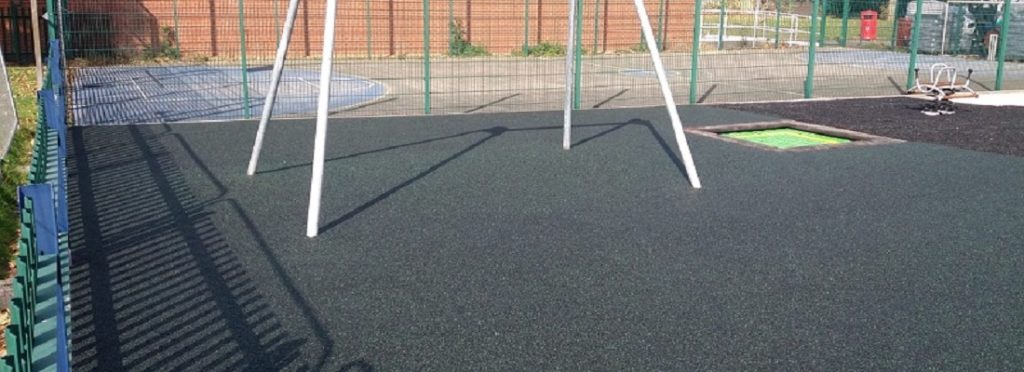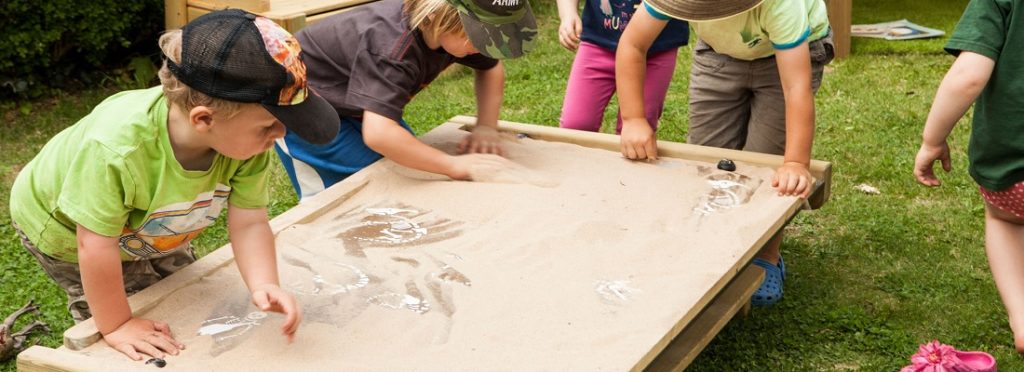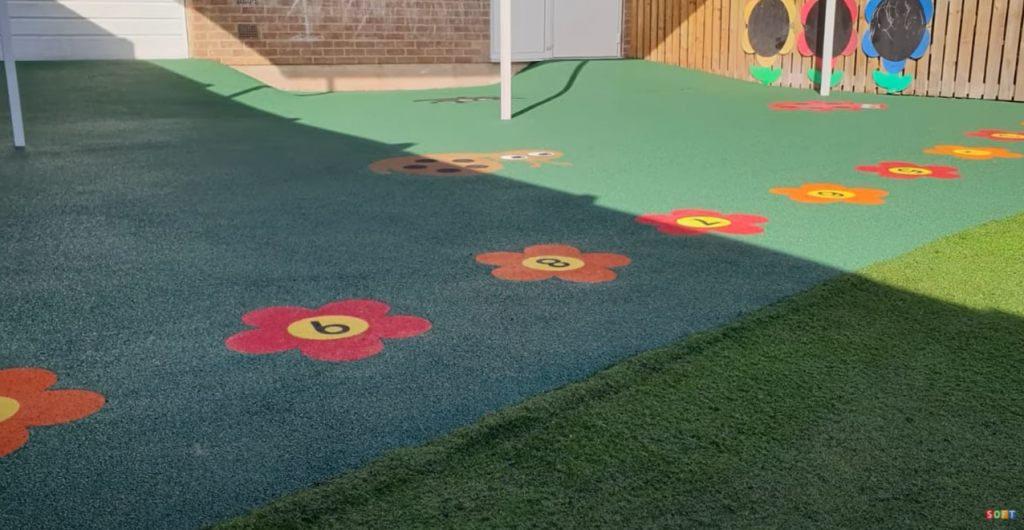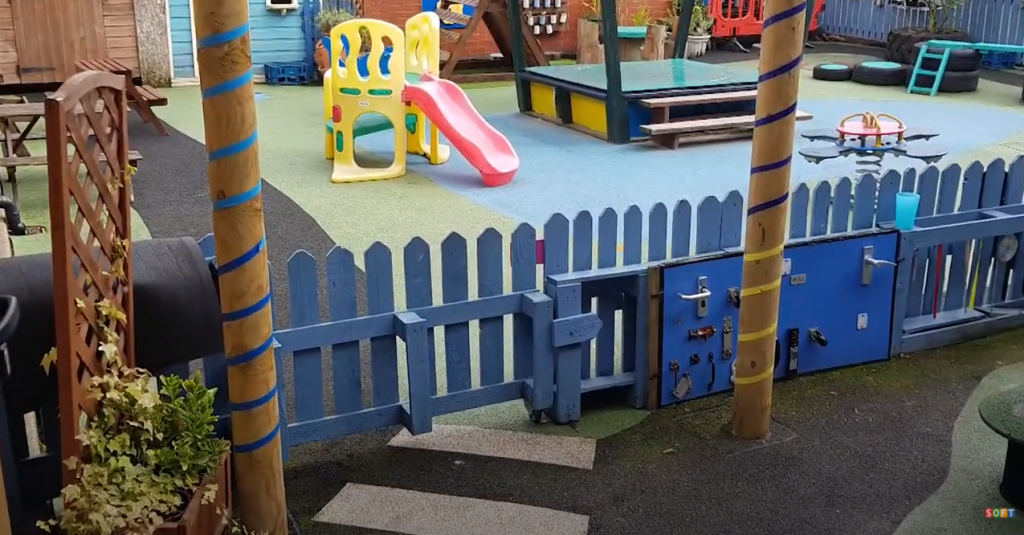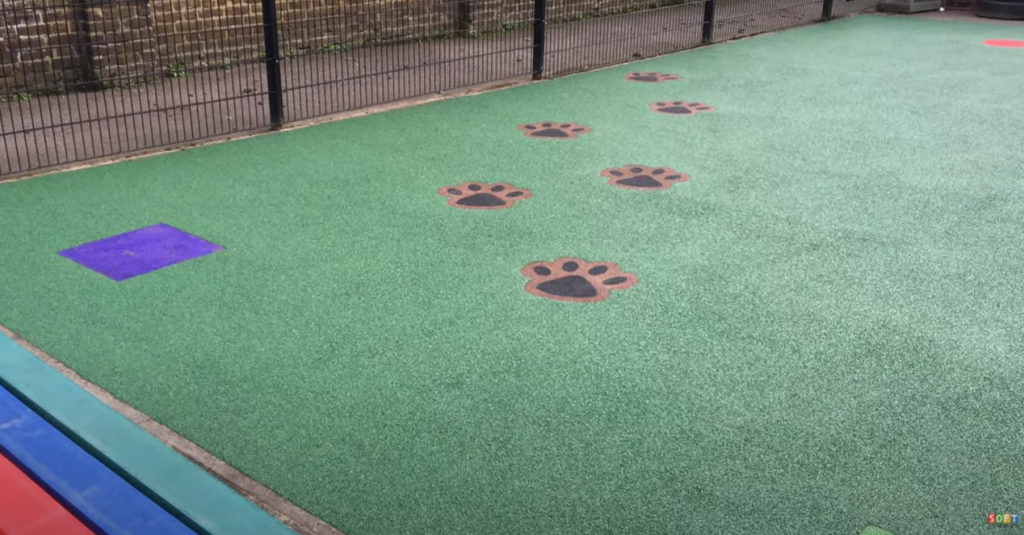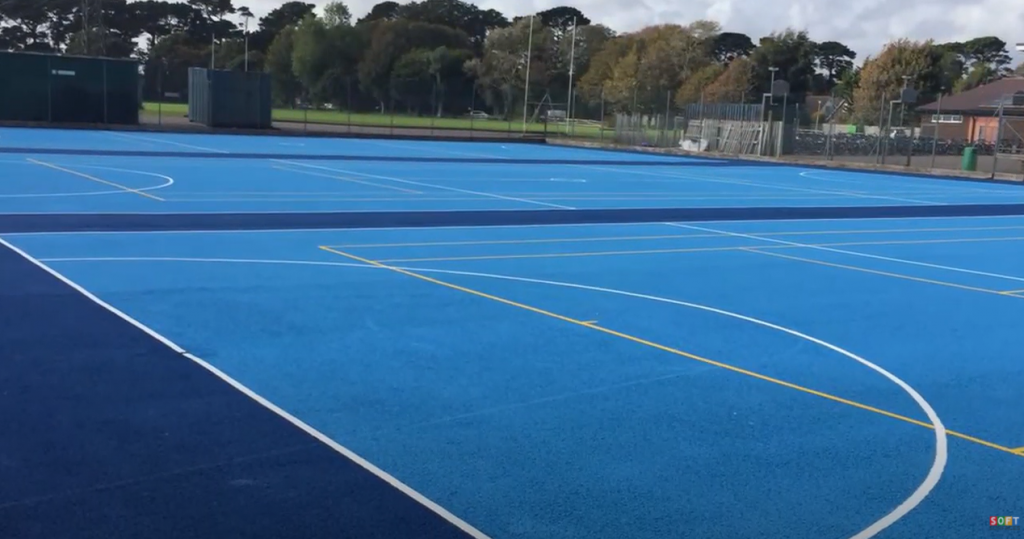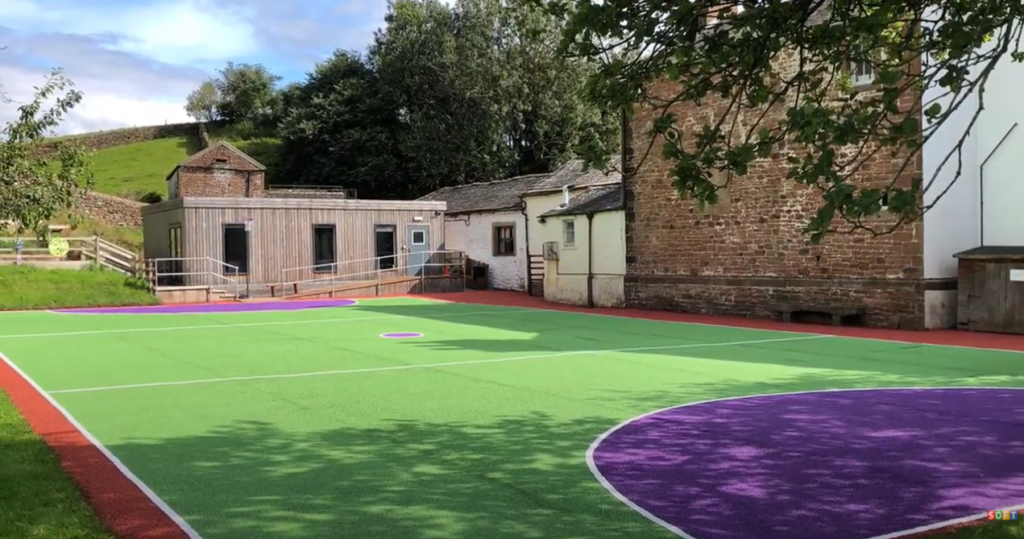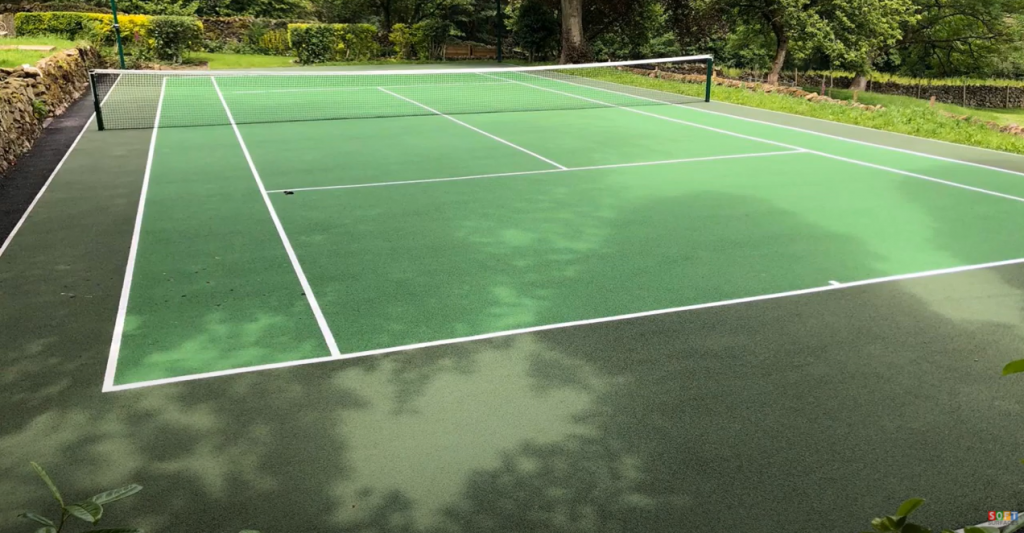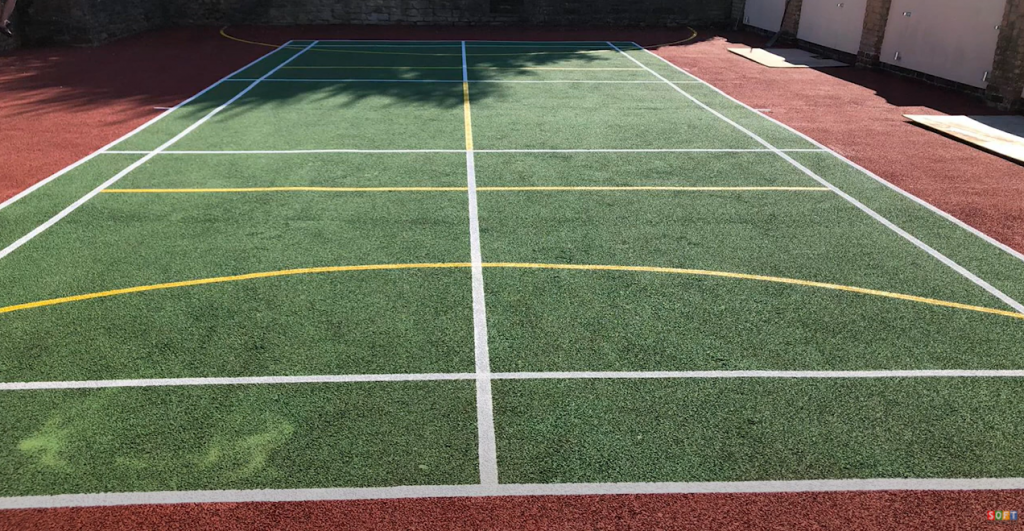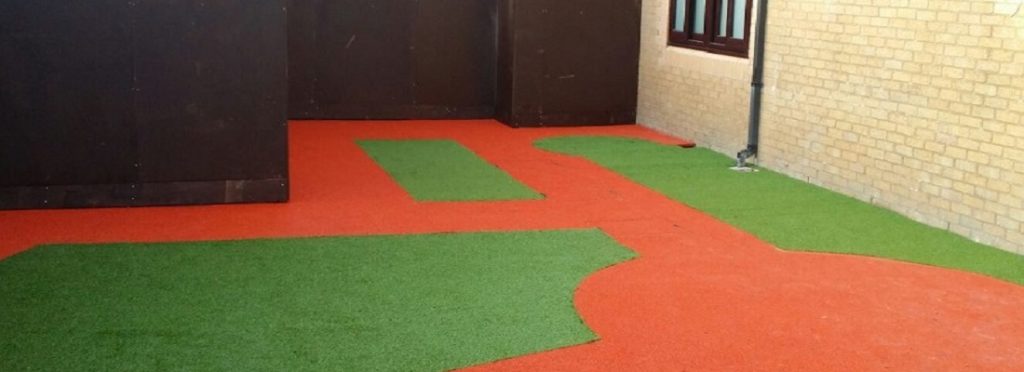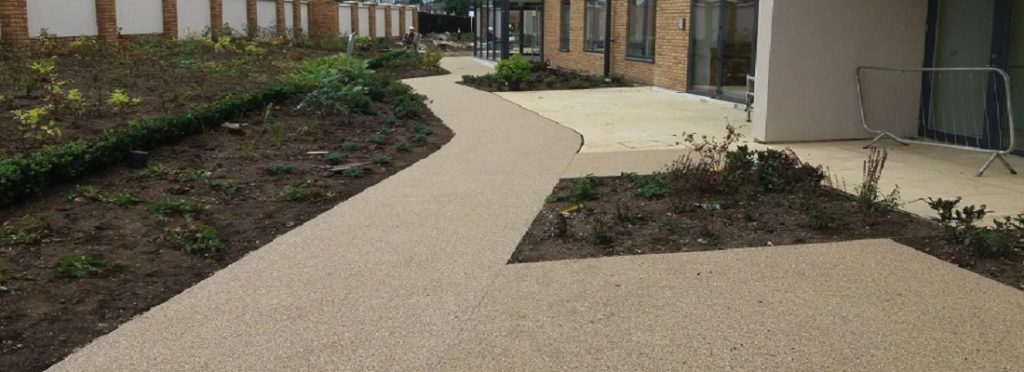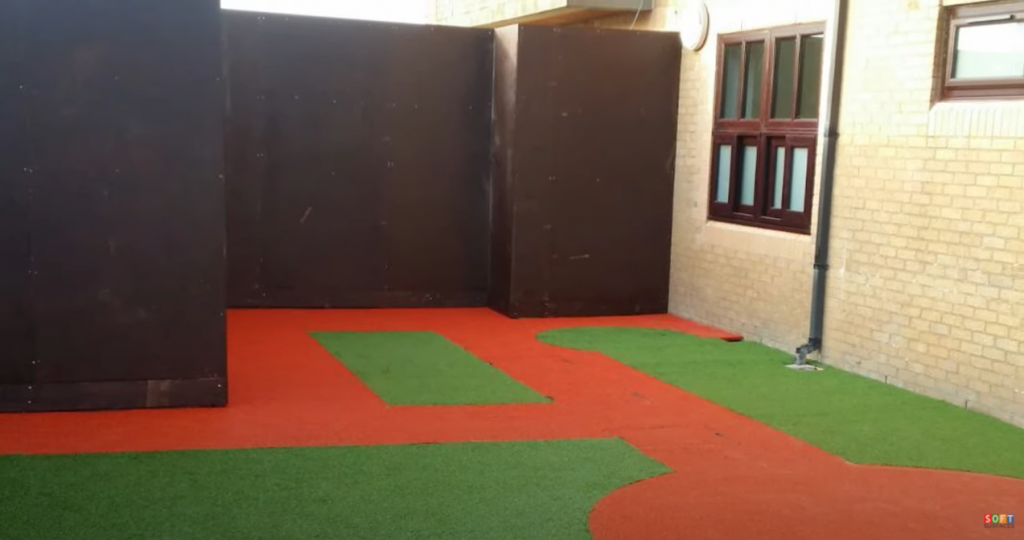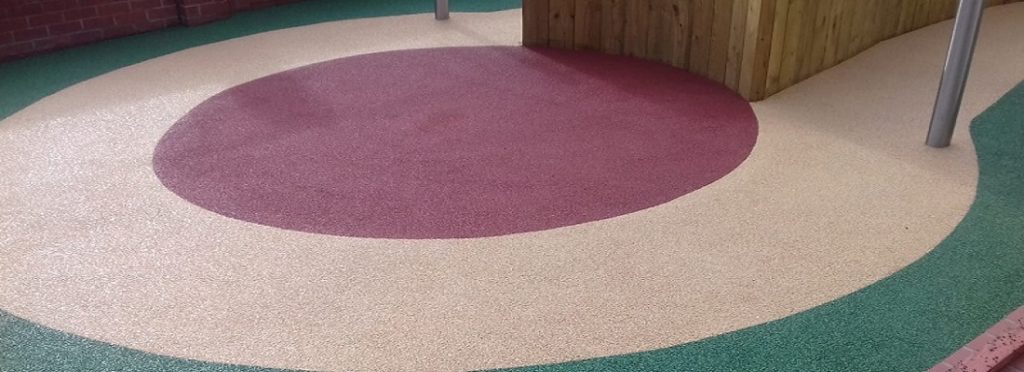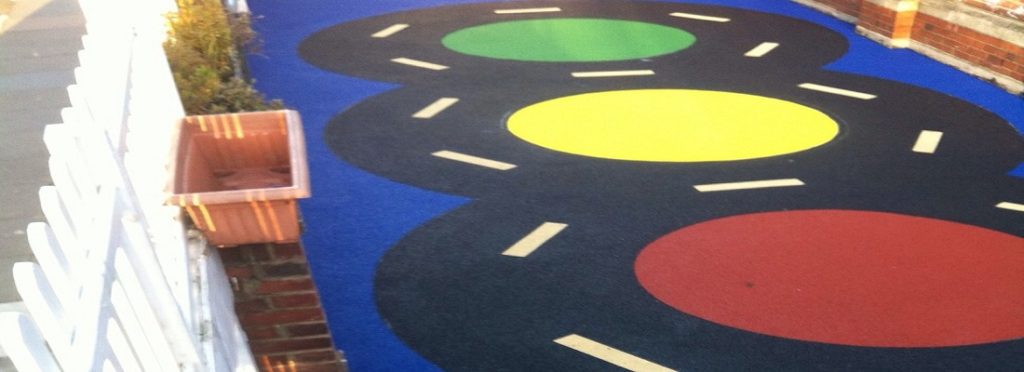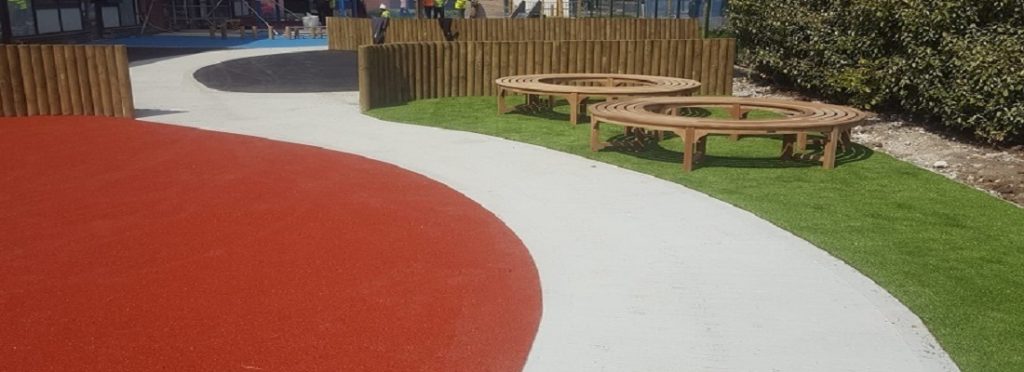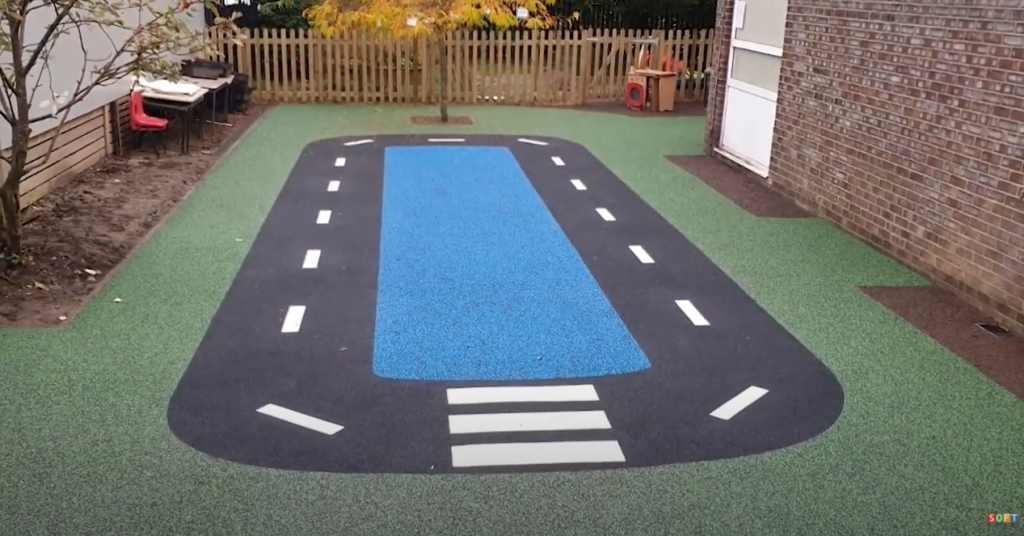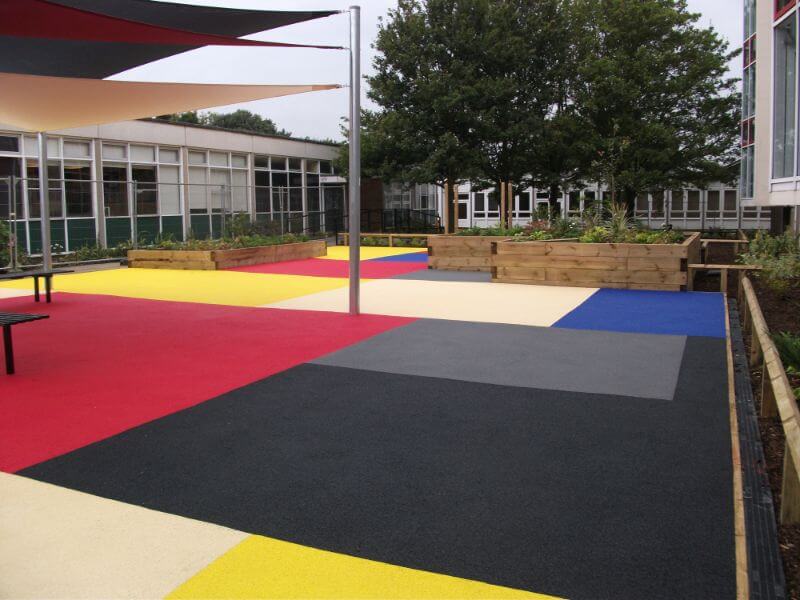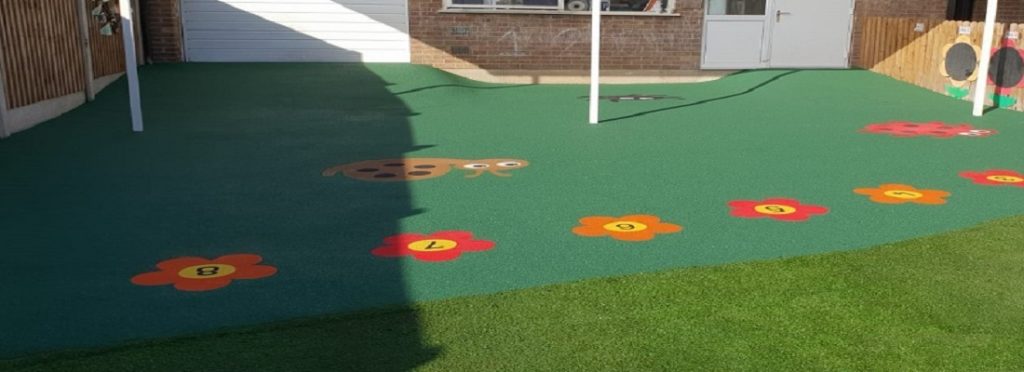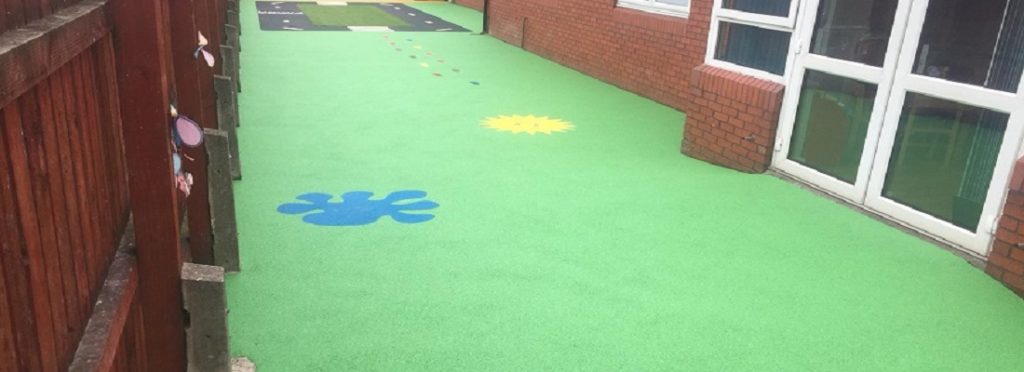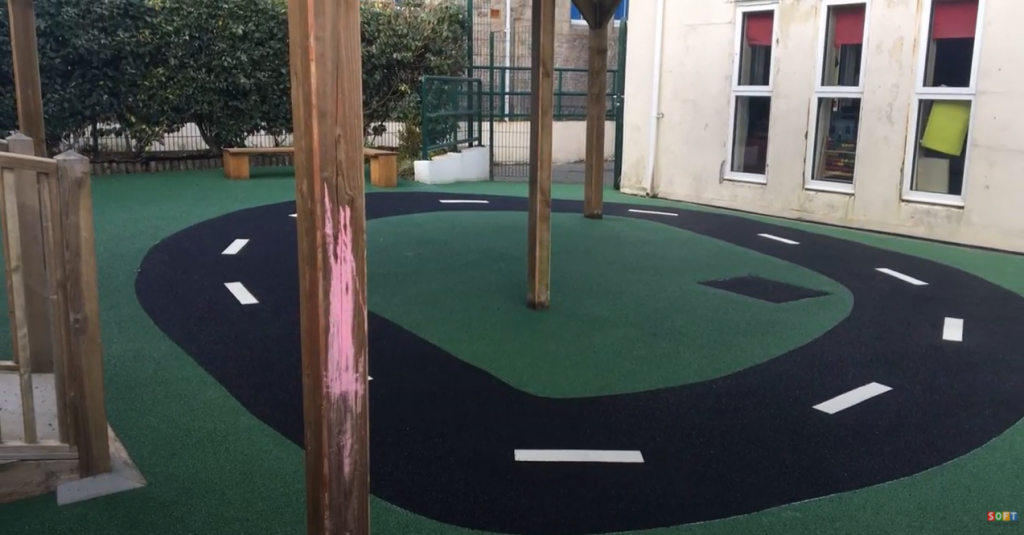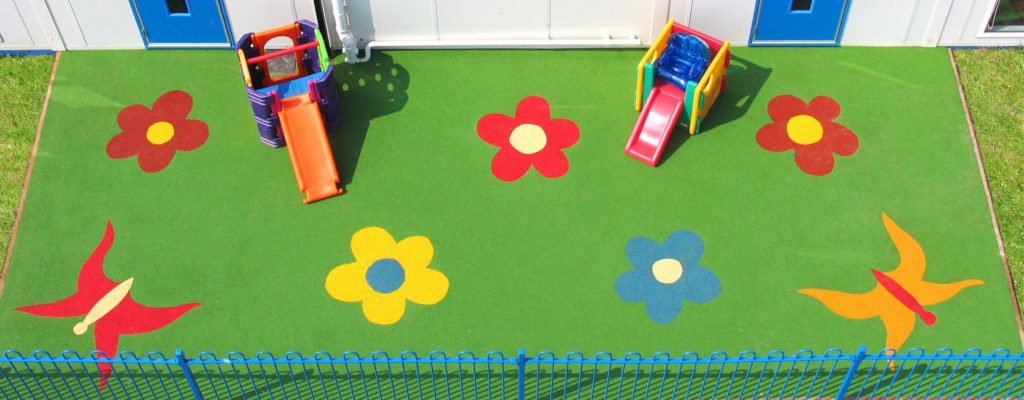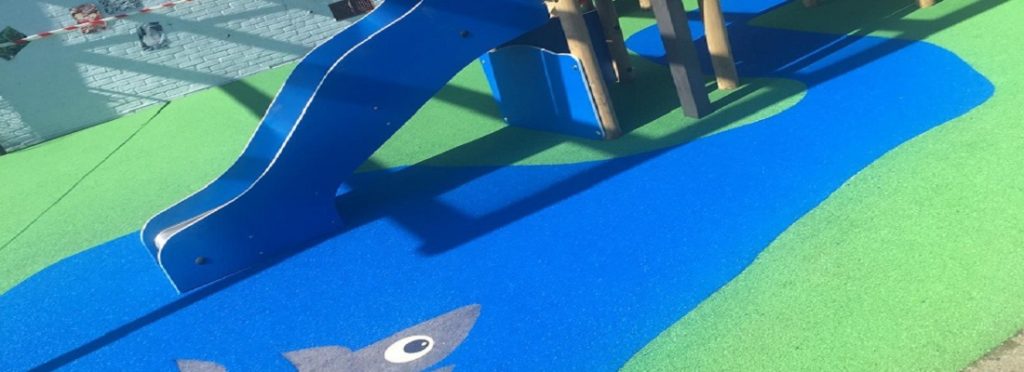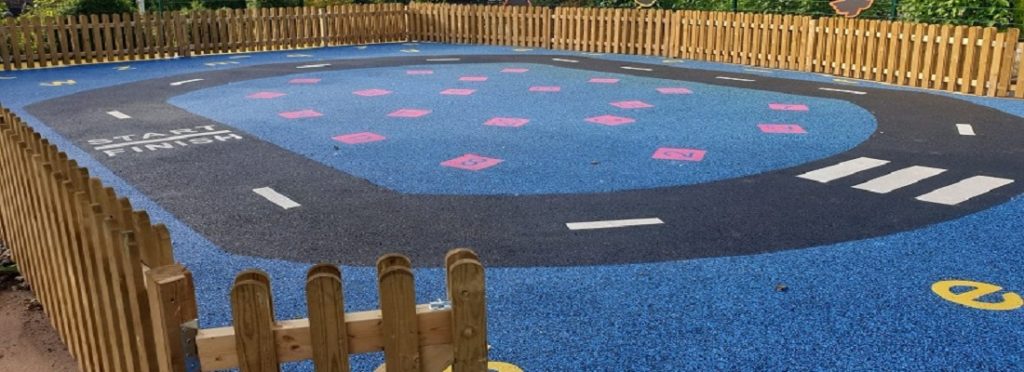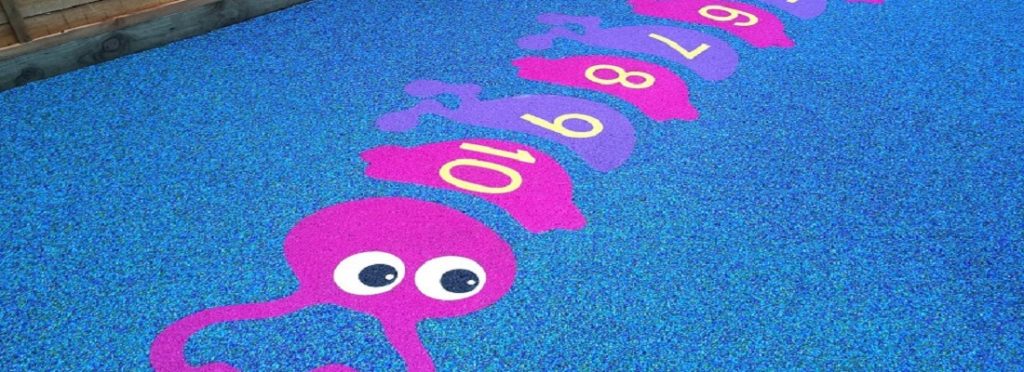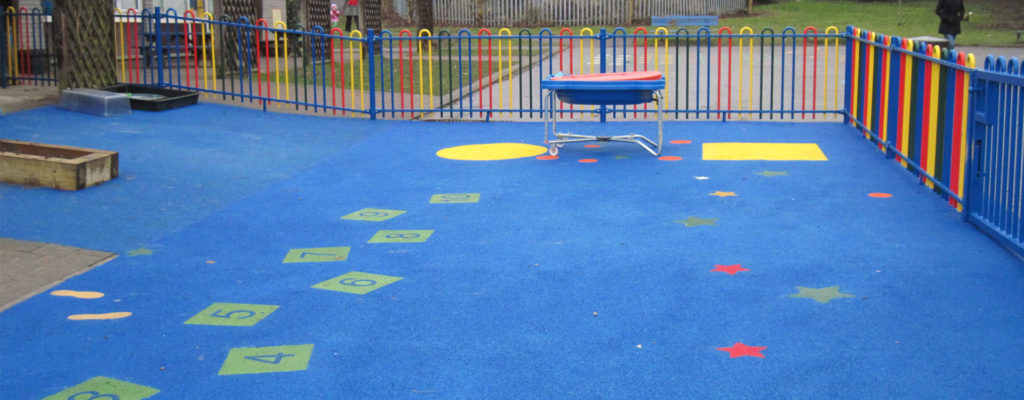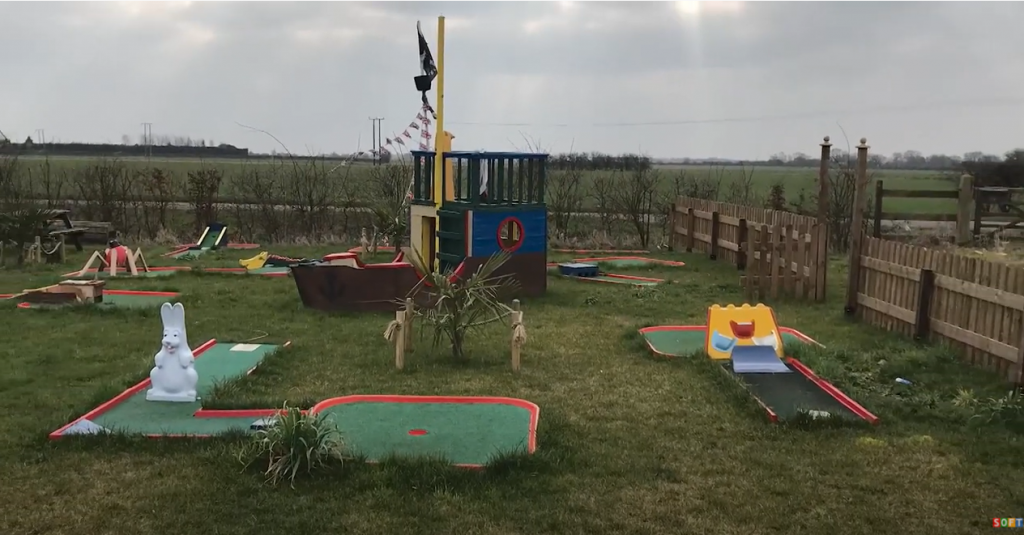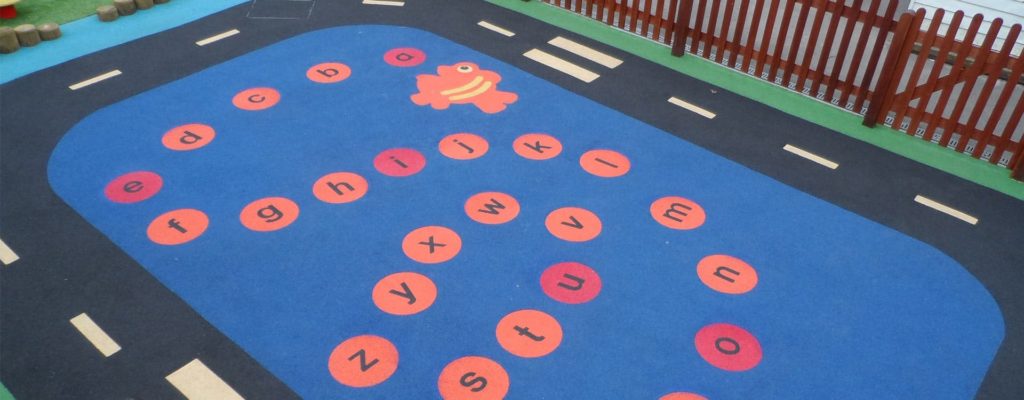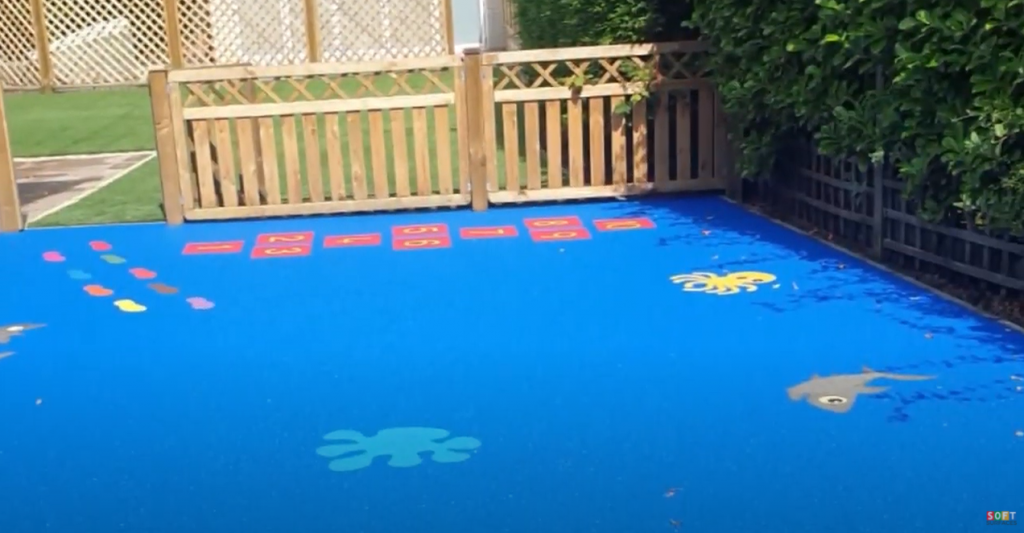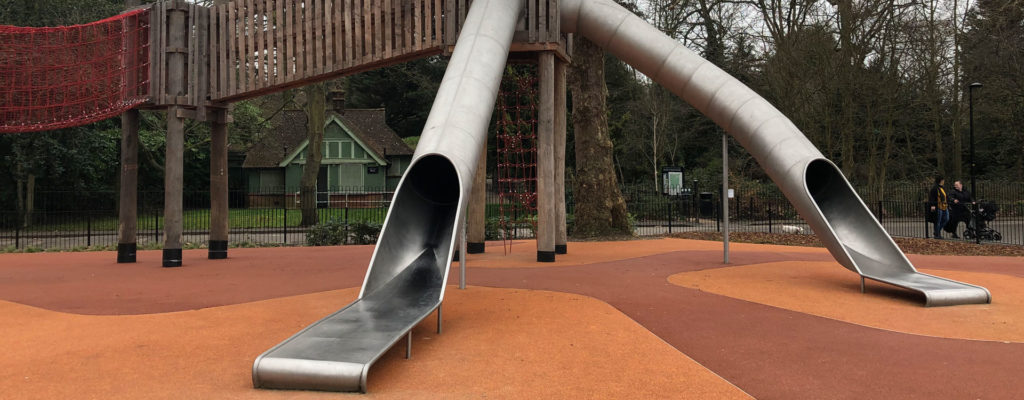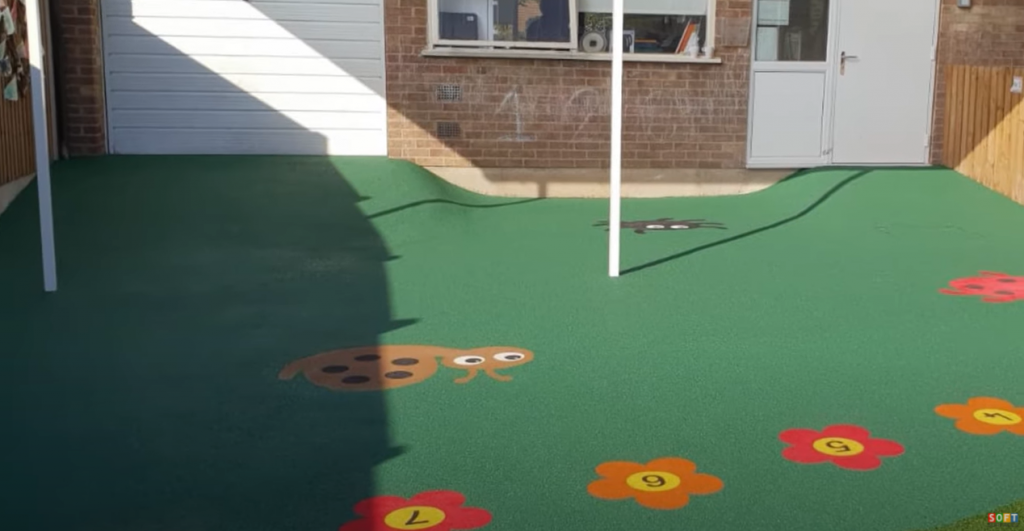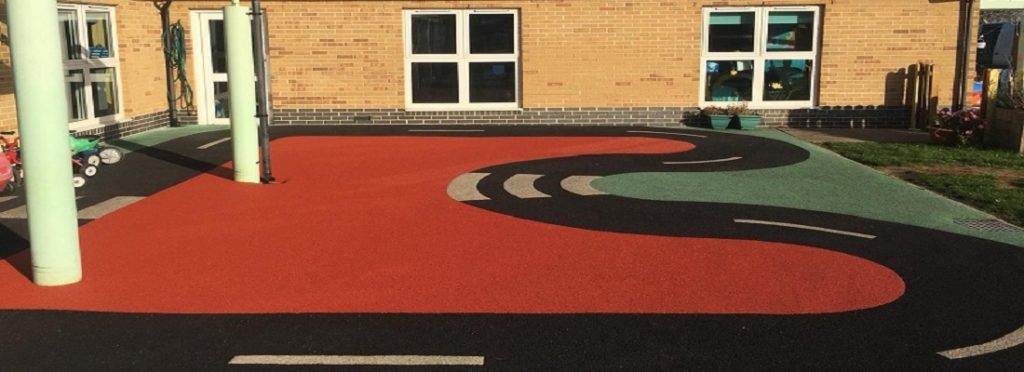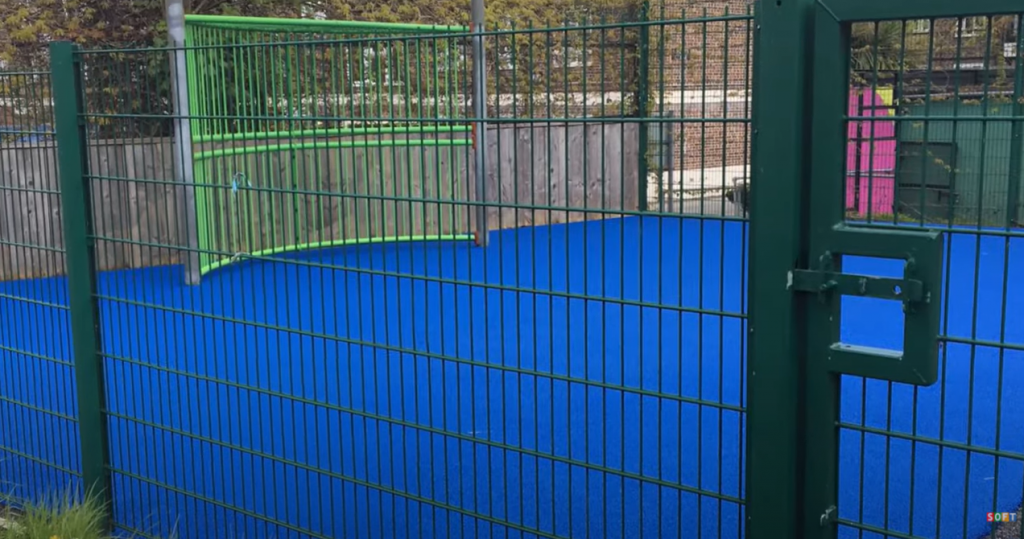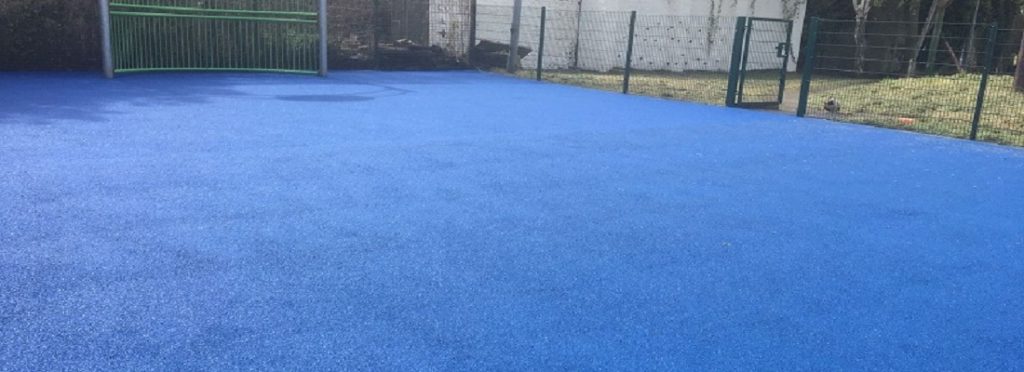Do you have an existing wetpour surface that has shrunk at the edges and has rips or tears? There are a few options you could use to fix this, but we think the best option would be a rubber safety surface overlay.
We have worked on many projects with the aim of upgrading the play area by carrying out an overlay of the existing wet pour safety surfacing. In the majority of these cases, the old surfacing becomes shrunken at the edges and tears may occur in the middle of the surfacing – particularly if the area gets a lot of use.
The different options include:
- A full rip up and replace
- Perimeter repairs and patch repairs
- Wetpour recap/overlay
The reason we would generally recommend the rubber safety surface overlay is due to saving on costs rather than ripping up and replacing. We would suggest the overlay rather than the patch and perimeter repairs, as you will not be able to see the repairs of an overlay, as you will be getting a completely new layer of wet pour.
What is a Wetpour Recap?
A wetpour recap is the installation of a new layer of EPDM rubber crumb over existing to look like a new surface. The recap does not involve ripping up the existing surface. The basics of a wetpour overlay consist of:
- Mix EPDM rubber granules with specialist resin
- Chase cut existing edges if required
- Pour rubber and resin mix over the area and spread to 15mm
- Leave to cure
The reason why Wetpour recaps are often preferred over patch repairs and perimeter repair is because it looks like an entirely new installation, whereas it is only a thinner layer being installed over existing. The EPDM chippings and binder are mixed on site and laid in situ.
Wet Pour Surface Renovation
A number of schools and nurseries across the United Kingdom have wetpour surfaces installed. We can complete wet pour surface renovation at fantastic prices and we will make certain you are happy with the overall transformation.
When carrying out a rubber safety surface overlay, we offer our clients a range of options. You may want to install a different colour or include a design within the area. Our team will be happy to speak through the various colours available and the costs of each.
As you may expect black EPDM rubber is the cheapest. A lot of clients have black wet pour installed with graphic inserts to improve the appearance.
If you are unsure about what colour to choose our team will be happy to offer advice. Make sure to fill in the contact form today for more information on colours and the renovation process.
Why Choose an Overlay?
You may be wondering ‘why should I choose an overlay when there are cheaper options available?’ or ‘would it not be best to completely rip out the surface and start new?’
We would generally recommend the overlay option, as you get benefits from both sides – it is not as expensive as a new installation, but it looks the same.
When replacing the surface you will need to pay for the removal of the existing surfacing along with 40mm (standard depth) of wetpour to be installed. This can become quite costly – especially if it is a large area because this will need to include labour fees.
With a wetpour overlay, you will not need to add on costs for removing the surface. Instead, we will lay over the existing surface and use this as a sub-base. Additionally, since we will be going over existing wetpour sub base, we will only need to install 15mm (standard) of wetpour, which will be much cheaper than 40mm.
Going back to the patch and band repair, although this is cheaper it is not necessarily the best option for you. With a band and patch repair you will be able to see where the new wet pour has been installed. Even if you have black wetpour presently and you get black again, the colour will still not be the same. This is because the sun may have faded the surface slightly.
People often put graphics in place of their tears and choose a completely different colour to border their existing area. However, this is entirely your choice!
- Artificial Grass and Rubber Mulch Surfacing in Derby, Derbyshire
- Artificial Grass and Wetpour Pathway Installation at a School in Birmingham
- Artificial Grass and Wetpour Roadway Construction in Liverpool
- Artificial Grass with Rubber Shock Pad Installation at St Ann's Hospital, London
- Black Wetpour & Artificial Turf Construction at a Nursery in Harlow, Essex
- Black Wetpour Flooring Construction in Canterbury
- Black Wetpour Overlay at a Playground in Peterborough, Cambridgeshire
- Black Wetpour Play Area with 5% Green Fleck in Swansea, Wales
- Brown and Green Rubber Mulch Bench Surround in Birmingham
- Cleaning and Painting of a Tennis Surface in Manchester
- Coloured Wetpour Playground Design in Birmingham
- Colourful Play Area Surfacing in Sheffield
- Colourful Rubber Playground Flooring in Wakefield, West Yorkshire
- Colourful UK Playground Surfacing in Bedfordshire
- Day Care Playground Safety Flooring in Stoke, Staffordshire
- Educational Playground Surface Installation in Brighton, East Sussex
- EPDM Rubber Play Area Flooring in Luton, Bedfordshire
- EPDM Rubber Wetpour Flooring in Newcastle
- Green Playground Safety Flooring in Somerset, UK
- Green Rubber Tarmac Playground Surfacing in Ashbourne, Derbyshire Dales
- Green Wetpour Flooring with Graphics Install in Exeter
- Green Wetpour Play Area Surfacing in Southampton
- Large Wetpour Play Area Surface Installation in Stockport, Greater Manchester
- Outdoor Safety Flooring Designs
- Playground Surfaces in Lancashire
- Playground Surfaces in Merseyside
- Playground Surfacing in Berkshire
- Playground Surfacing in County Durham
- Playground Surfacing in Cumbria
- Playground Surfacing in Devon
- Playground Surfacing in Dorset
- Playground Surfacing in East Yorkshire
- Playground Surfacing in Hampshire
- Playground Surfacing in Norfolk
- Resin Bound Surfaces in County Durham
- Resin Bound Surfaces in Kent
- Resin-Bound Surfaces in East Yorkshire
- Rubber Mulch Safety Surface Designs
- Rubber Safety Surface Overlay
- Safe Play Area Surface
- Safety Surfaces For Playgrounds
- Soft Fall Impact Absorbing Playground Surface
- Spongy Playground Flooring Construction in Woking, Surrey
- Spongy Safer Pour Surfacing for Playgrounds
- Wet Pour Surfacing and Synthetic Turf Construction in Worthing, Sussex
- Wetpour Pathway Installation at a Retirement Home in Leicester
- Wetpour Swimming Pool Surround Install in London
Contact Us
If you wish to speak with our team regarding a wet pour overlay, please fill in the contact form provided now. One of our experts will get back to you at the earliest opportunity to discuss the costs and colours available.
